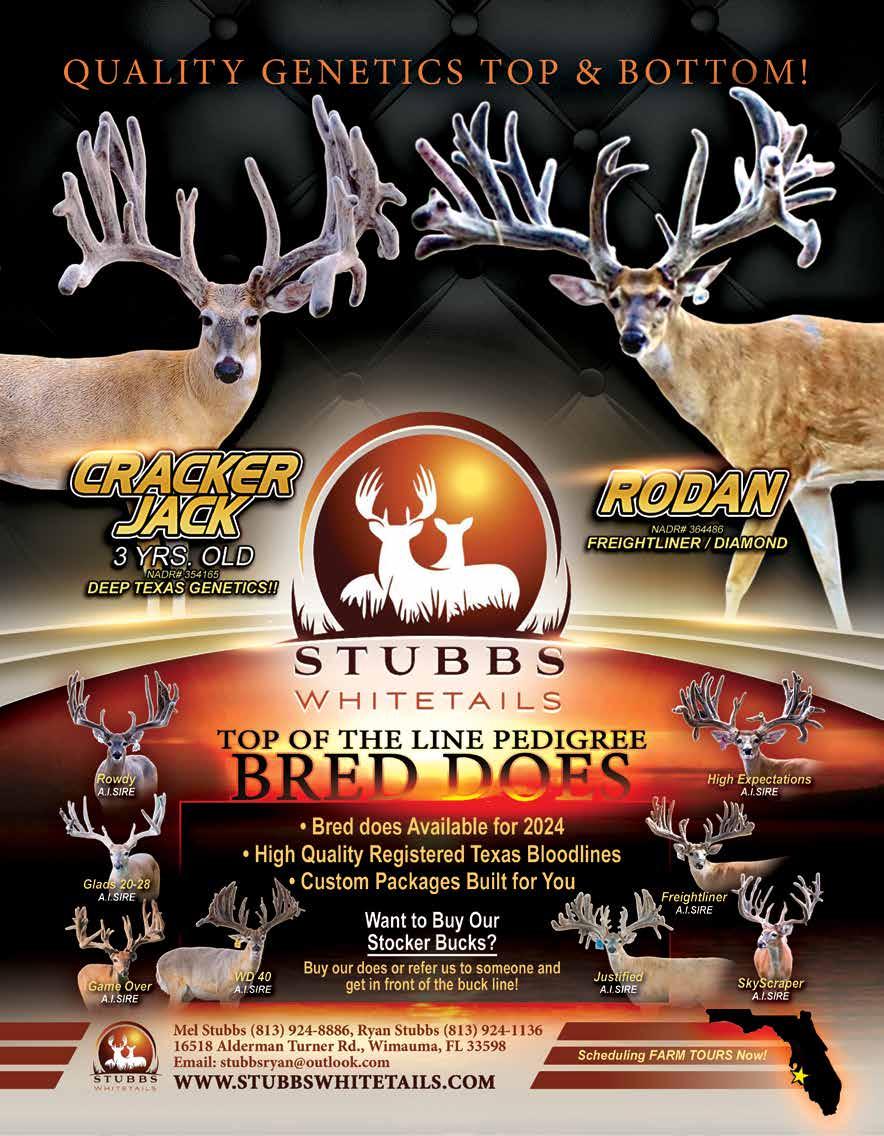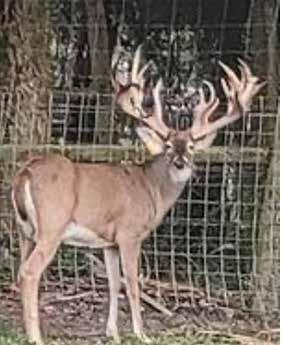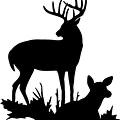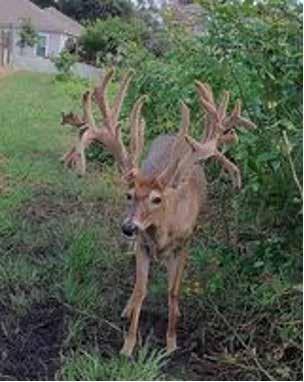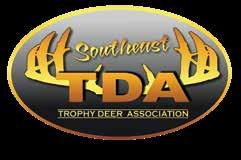

SOUTHEAST TINES
DREAM GENOMICS
Developing Cutting Edge
CWD Detection Test
Sponsored by KEDA
EMBRYO FLUSHING
a Proven Breeding Practice
Sponsored by KALA
PREPARING DOES FOR BREEDING SEASON
Advice From Alabama
Sponsored by ADA


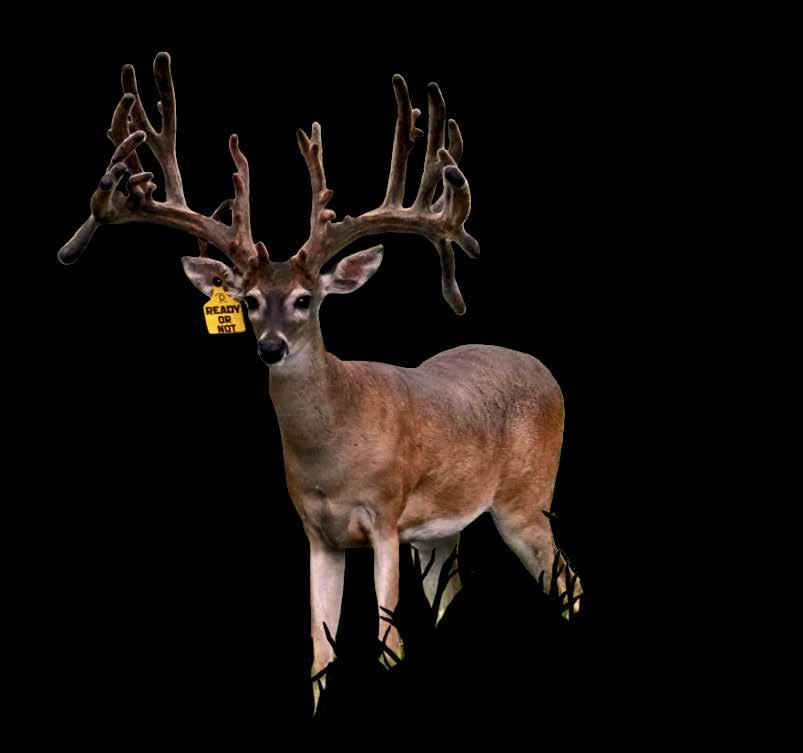





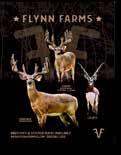
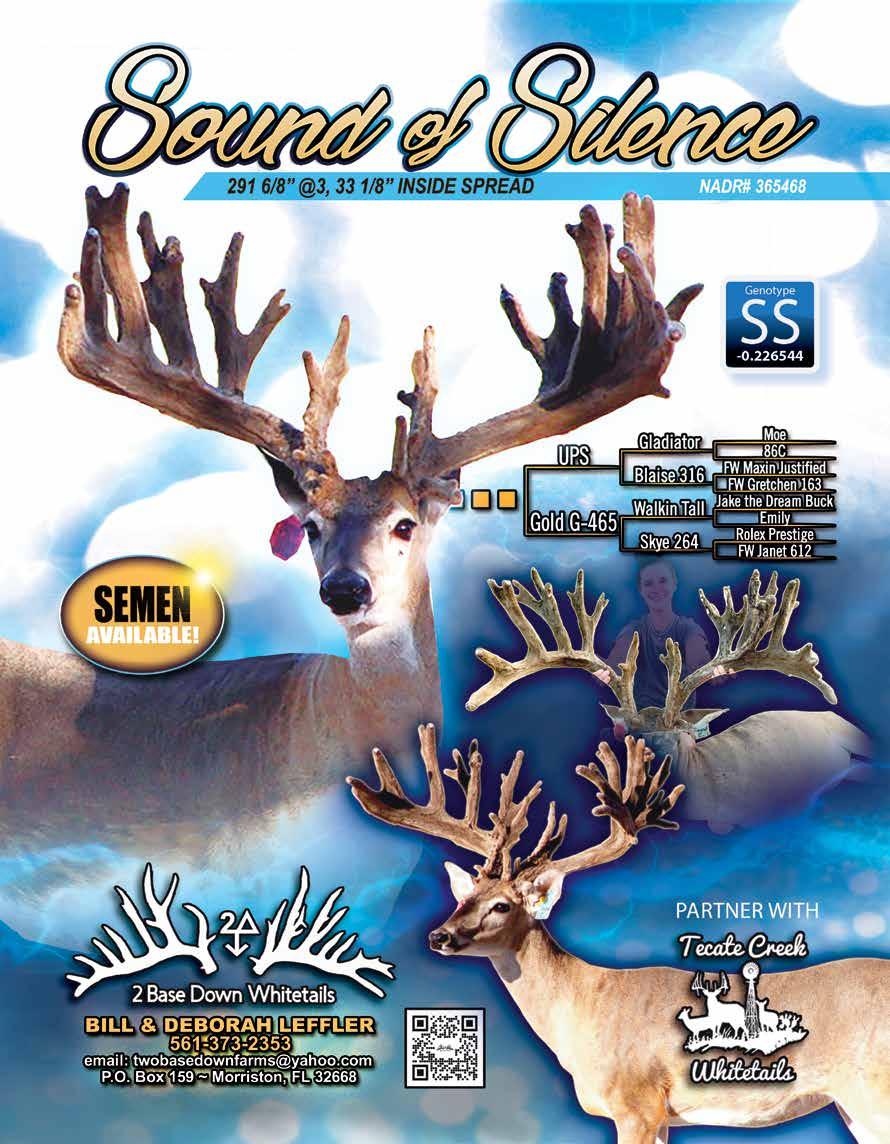
DOES FOR SEASON
ALABAMA
Deer Farmers Association
“If a doe has had a bout of EHD close to breeding season, I highly recommend not putting her through the stress of A.I.,” Odom, 48, said. “At our farm, we would breed her naturally instead through live cover.”
To have the healthiest does, a diet high in quality hay, grain and minerals is recommended yearround, with an increase of those things during the winter and spring months as fawns are developing, born and raised (simultaneously along with future breeding plans and preparations.) “I feel this is something every farm should practice, along with regular wormings and vaccinations, to ensure their does have appropriate antibodies and that their body condition is good,” Odom said.
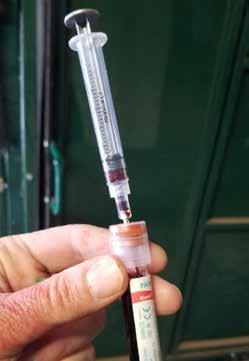
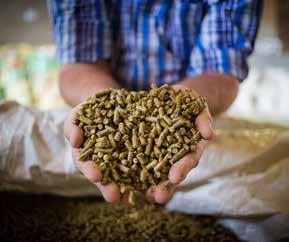
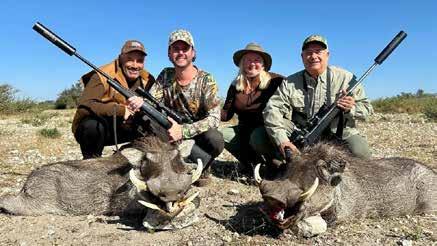
Body condition and overall health also factors into weaning fawns. “If one of your does becomes sick in August or September, it’s not recommended that you compound the situation by pulling fawns off,” Odom said. “Wait a couple weeks
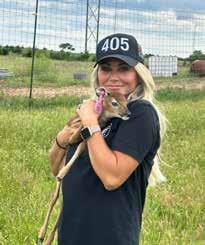
41 43 53 10 41 19 28 37
or so until she is healthy again. Remember you want your does as strong and as healthy as they can get as breeding season approaches.”
A strong hunting economy, perpetuated by an abundance of state-wide preserves, means the demand for deer is high. In Alabama, a closed-border state, maintaining healthy deer herds is essential to the long-term success of every deer farm. “Essentially, good animal husbandry is the biggest key to success,” Odom shared. “Knowing your herd and laying eyes of them every day, even twice a day, is an important part of this. Be vigilant and aware. Vaccinate and utilize A.I. whenever you can to increase hearty genetic variety while being mindful of your end market. Is CWD resistance important? Antler size? Negative GEBV markers? Or all of the above?”
Odom feels everyone involved in The Alabama Deer Farmers Association strives hard to stay abreast of the latest industry trends, and to be compliant with the regulations set in place by The Alabama Department of Conservation and Natural Resources. “We have a great group of deer farmers operating well-run and well managed deer farms,” Odom said. “We are grateful for the opportunity to do what we love with the support of our spouses, friends, family and customers.” 43




BOARD OF DIRECTORS

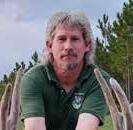


Dr. Bill Leffler
2 Base Down Farms PO Box 159
Morriston, FL 32668
561-373-2353
Bleffler2011@gmail.com
twobasedownfarms@yahoo.com VICE
Matt Young Taxidermist
Tillman Outdoors LLC 13669
Buckskin Rd
Brooksville, FL 34601
352-206-4745
sportsmens9@yahoo.com
TREASURER
Wendy O’Brien
5 Star Bookkeeping & Tax Service LLC Spirit Ranch
26838 Mondon Hill Rd Brooksville, FL 34601
352-584-0971
spiritranchfl@gmail.com

341 SW Ballaed Ct., Lake City, Florida 32024 561-644-8029 buckfeathers@bellsouth.net
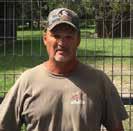



Benny Wilkison Lil Oak Whitetails
3193 NW 216th St
Lawtey, Fl 904-424-7233
liloakwhitetails@yahoo.com
Mike Vizcaino Osceola Whitetails 149 Sand Lake Dr Pomona Park, Fl 32181 904-814-7214
mvizcain@bellsouth.net
Tim Cromwell 18015 NE CR 1471 Hampton, FL 32044 352-727-9528
Sam Petersheim Crescent Ranch 6547 Midnight Path Road #87 Sarasota, FL 34242 217-273-3331
samkey80@gmail.com


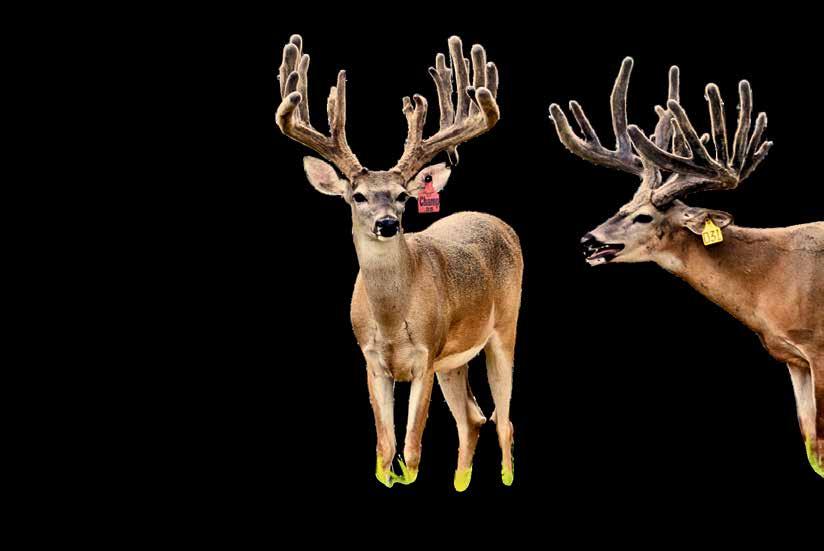



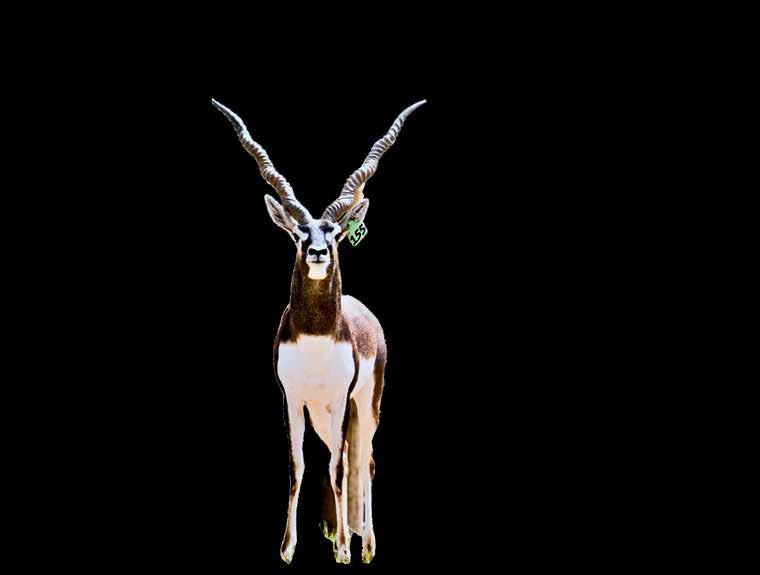

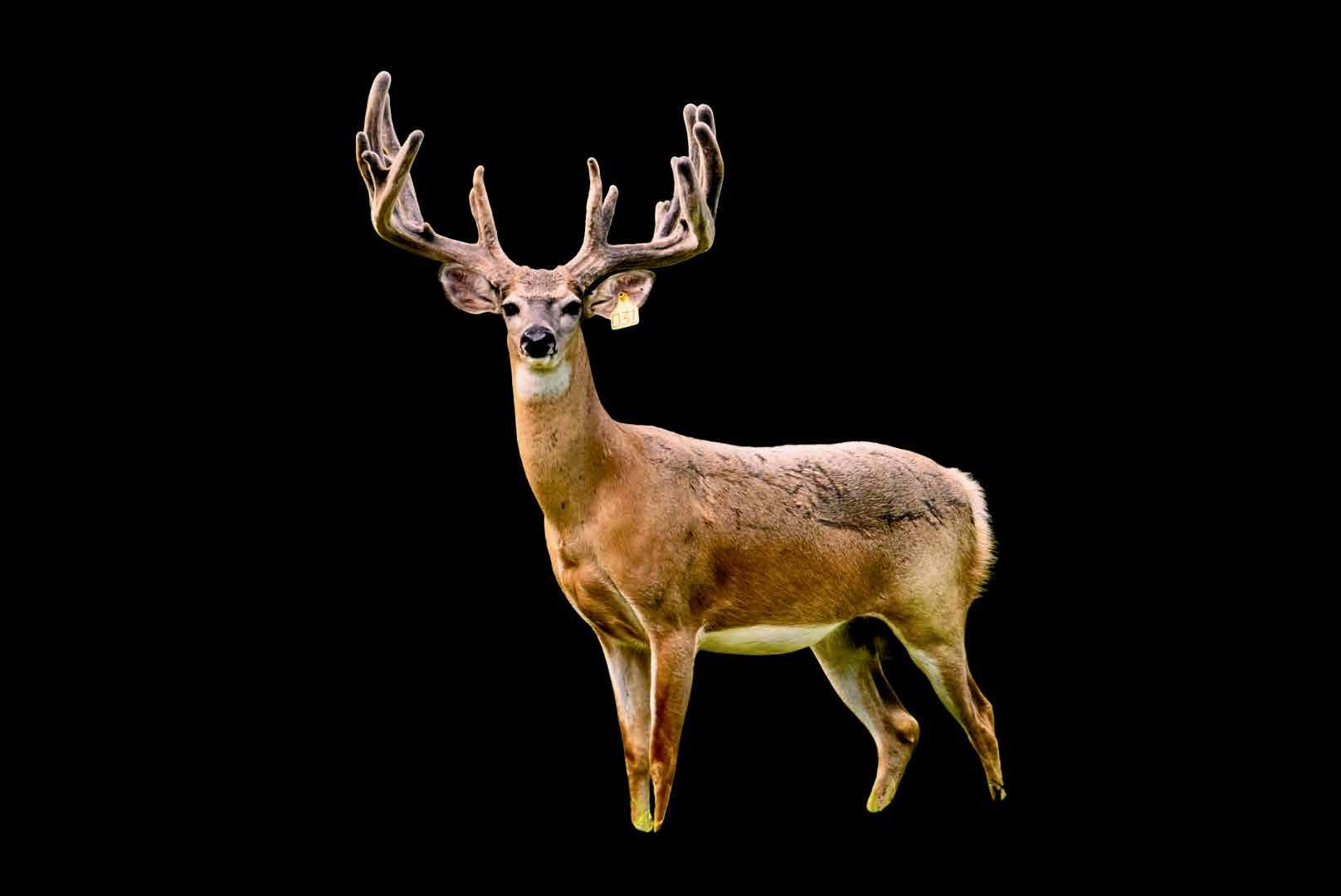
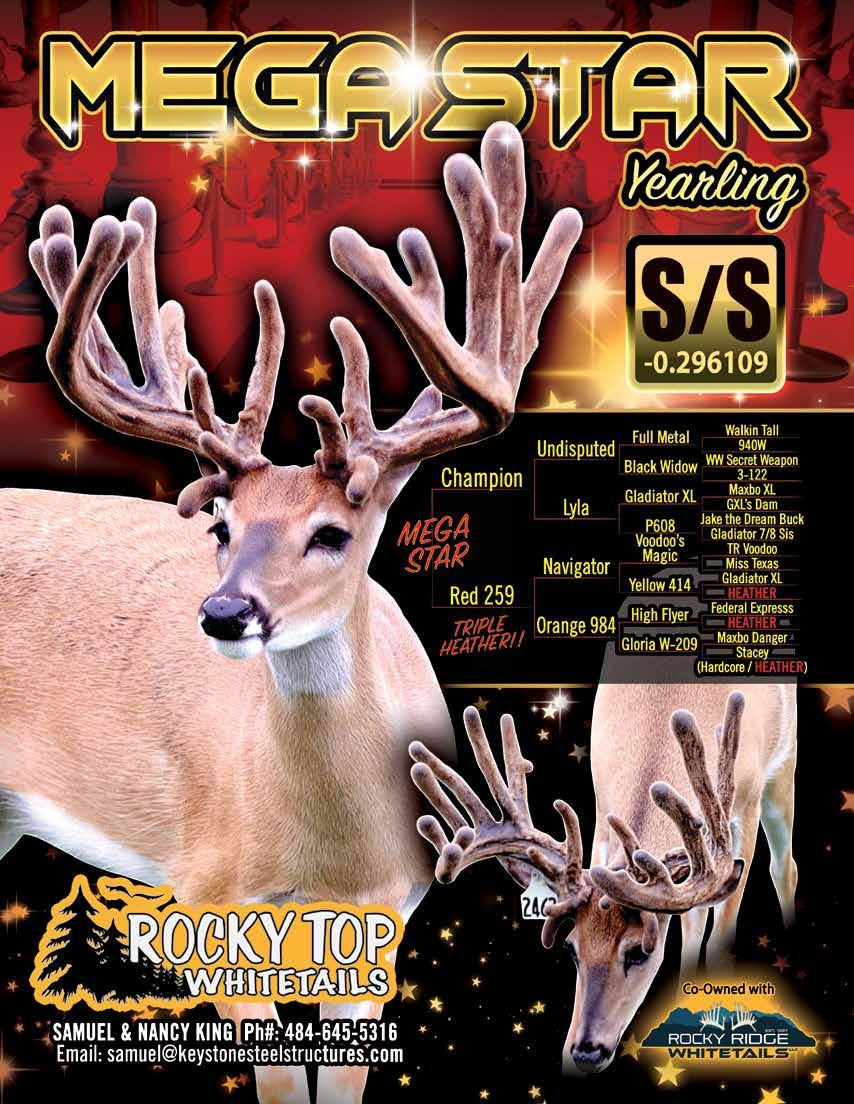
President’s Message

With temperatures approaching 100° F and almost daily drenching thunderstorms, it’s hard to believe that Fall is almost here.
Our bucks have grown to their full potential, and most will be sold to either preserves or other deer farmers, as will many of our does and some fawns. This is the business of deer farming and finally our pay day has arrived. I hope and pray that it will be a “Big one” for all.
Unfortunately, this is also the peak for hemorrhagic diseases, both EHD and BTV in Florida. The great people of UF CHeRI are constantly helping deer farmers, not just in Florida but across the country with their research findings. They were at SETDA’s Summer Picnic, and the agenda is in this issue.
The Summer Picnic was a huge success thanks to the generosity of our sponsors and donors: CHeRI, Cracker Land & Cattle Company, Tillman Outdoors, Brooksville General, and Deer Doc.
CHeRI needs deer farmers support with some of their newest research involving Deer Pox and other issues. Pox is the leading contributing factor in fawn mortality in Florida. Please say YES and volunteer.
In this issue, you will find Part 6 of The Truth About CWD and the role Feral Pigs contribute. You will also find out what happens for the lucky winning bidders of those Safari hunts offered at SETDA’S Spring Fling Auction in My Most Memorable Hunt section. Steve Porter reports on Minnesota’s “Blue state” politics, which recently ruled that farming in Minnesota is NOT a fundamental right , and as such they believe that it can be taken away at will.
Mark your calendar, the next SPRING FLING AUCTION will once again be held at the Doubletree Hilton by the Orlando Airport on March 6th & 7th of 2026. We will be reaching out to inquire who wants a booth in 2026, but will offer first right of refusal to those who had a booth in 2025. Should demand dictate, the board will determine if we will change the room layout as to accommodate up to 29 booths. Deadline to pay for Booths will be December 1, 2025. If interested in purchasing a booth, please let a board member know asap.
As always, myself and your board are here to help and serve you. Thanks for your trust and support.
Remember to stay safe and “Florida Strong “.
Sincerely,
Dr. Bill Leffler

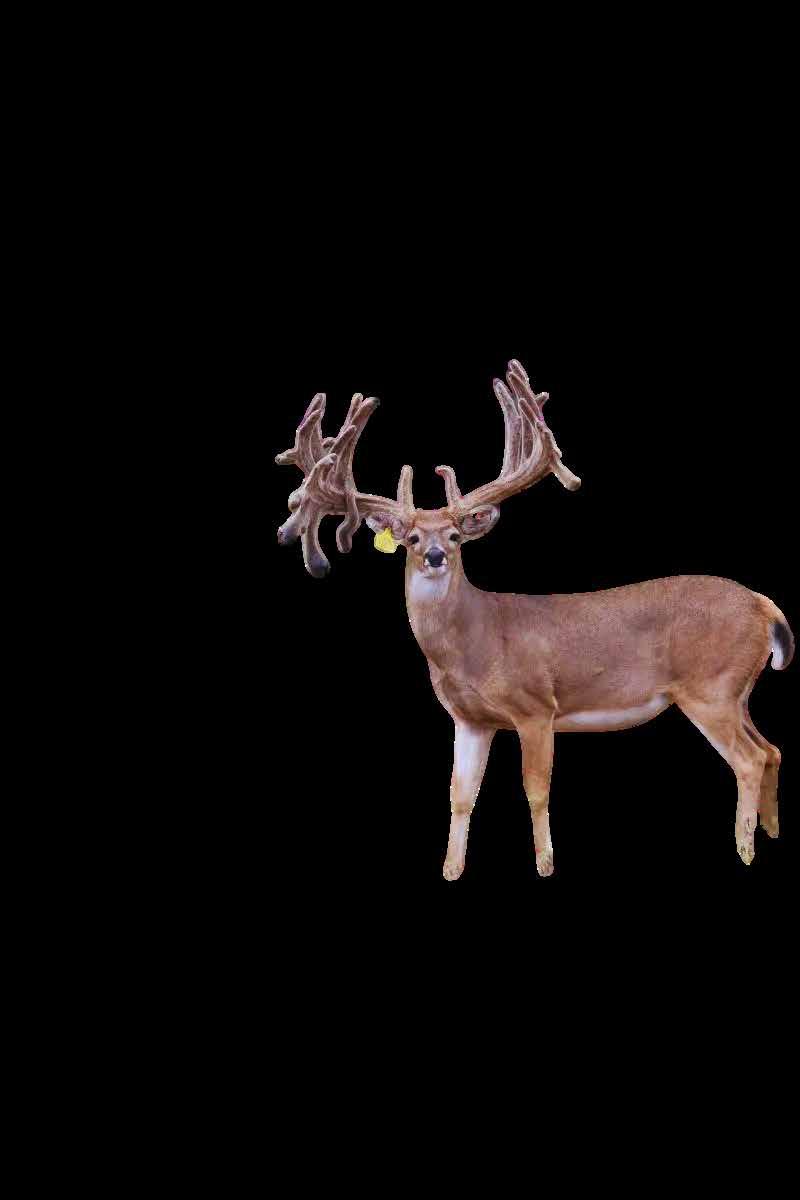
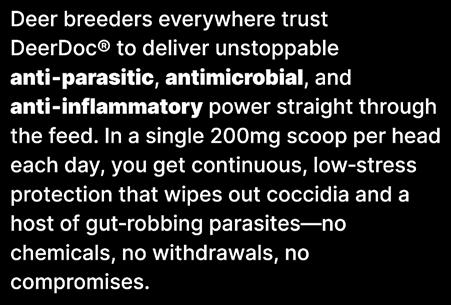


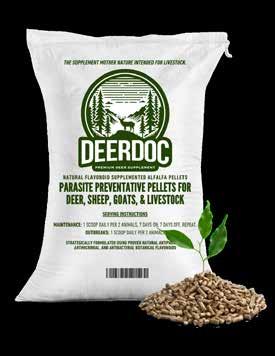

Dear SeTDA Member:
The Board of Directors (Board) for the Southeast Trophy Deer Association (SeTDA) has an open Board position. SeTDA is looking for a HARD WORKING individual who will devote the necessary time and energy to accomplish the following missions of SeTDA:
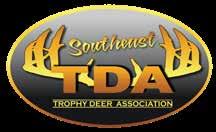
•To promote the business of raising and marketing Whitetail Deer in the State of FLORIDA.
•To provide educational opportunities for members of the Corporation and other interested people through the sharing of information concerning Whitetail Deer.
•To serve as a collective voice in governmental issues that affect whitetail deer producers, so as to enhance the Whitetail Deer industry.
•To promote high ethical standards in the care, handling and harvesting of Whitetail Deer.
•To require members of the Corporation to operate in a legal, honest and forthright manner with fellow members, other Whitetail Deer producers and the general public.
If interested in applying for a Board position, please answer the following questions:
CANDIDATE QUESTIONS FOR SETDA BOARD OF DIRECTORS
1.Please describe yourself and what you do outside of the cervid industry.
2.Please describe your operation. (How long have you been raising deer? Where is your farm located? Whatspecies are in your breeding program? What are your primary markets? Etc.)
3.Describe any roles you have served in (committee member, officer, etc.) for your state and/or nationalassociation (NADEFA).
4.Describe your position on open borders for your state of residence, as well as from a national perspective.
5.Why do you want to serve as a SETDA Director?
Mail to Dr Bill Leffler c/o 2 Base Down Whitetails, PO Box 159, Morriston, FL 32668 or email to Bleffler2011@gmail.com Deadline to have candidate questions in hand, is Friday, August 29th, 7pm


We are excited for you to explore the many industry articles, deer farming and vendor advertisements, and much more. We would like to encourage you to JOIN or RENEW your membership with SETDA in support of keeping the Cervid Industry live and well in our state. Visit our website for updates: southeasttrophydeerassociation.com
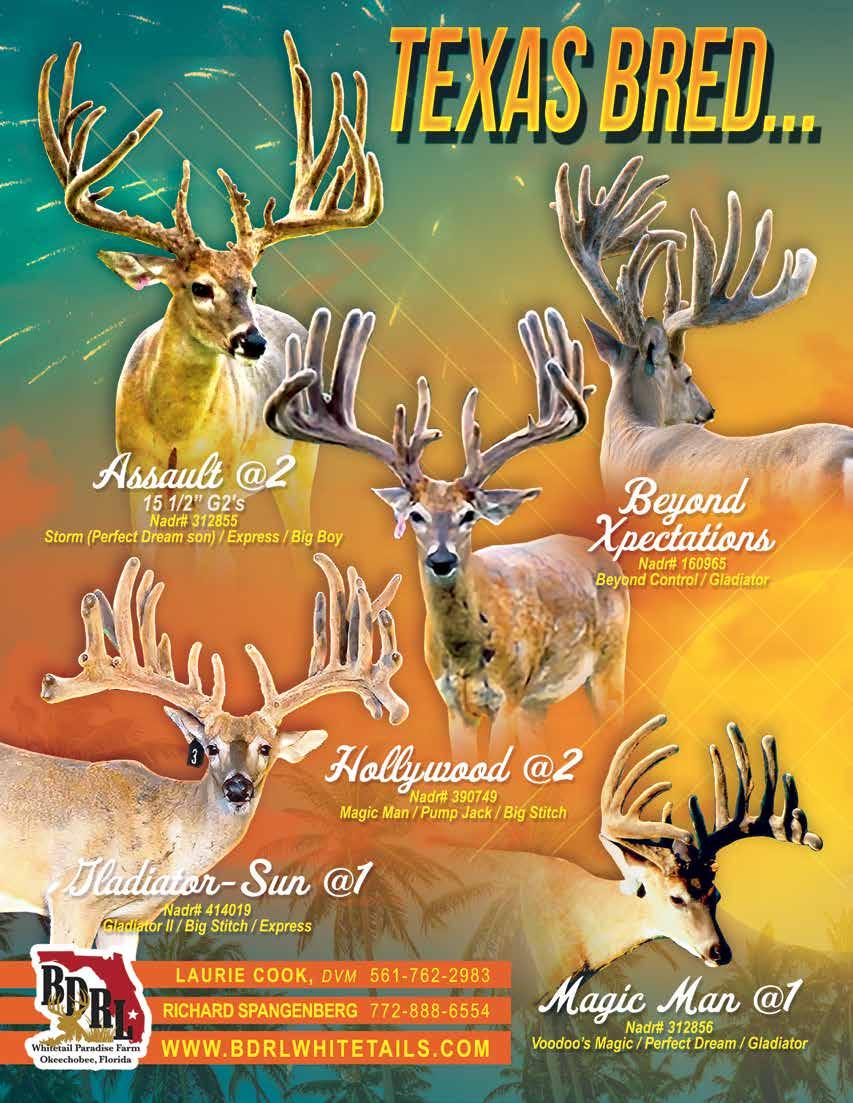
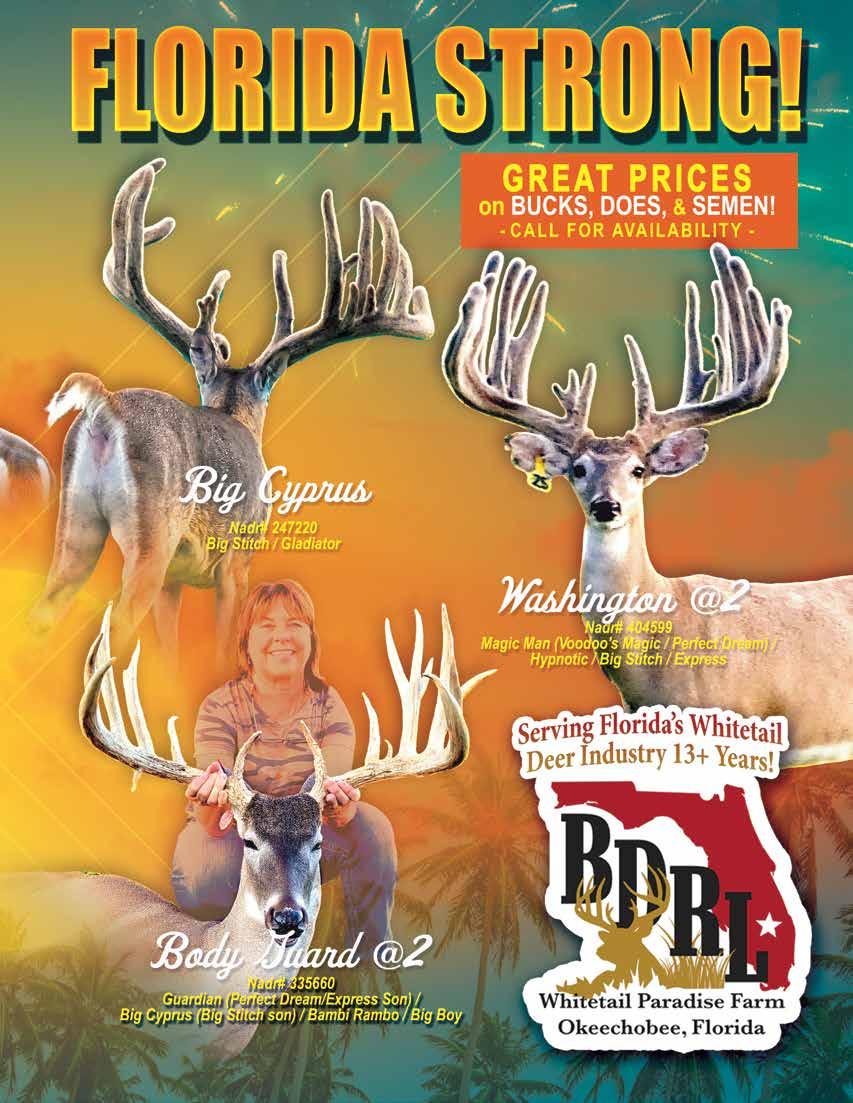
The TRUTH About CWD
The Truth About CWD: CWD Found in Wild Pigs
Part 6 of my continuing effort to educate and inform as many people as possible on The Truth About CWD
By Dr. Bill Leffler
When asked, what animal is the “most” invasive species in the United States, feral swine are frequently mentioned. But when asked what invasive animal is the most destructive species in the U.S., wild pigs are always number one. We need to remember that no pigs are native to the U.S., or North, or South America.
Hernando de Soto is credited for introducing pigs into the southeastern U.S. as his expedition sailed the gulf waters exploring the coastal inlands from Florida to Texas. The very first pigs were released in 1539 into Florida, around what is now known as the Tampa Bay area. He continued to release pigs at each new inland campsite/compound that he established along the way, and by 1542 Texas also had pigs. While the vast majority of these compounds failed, the pigs that were left behind thrived and spread.
European wild boars from Germany were released into hunting preserves in New Hampshire by1898 and into Texas preserves by the 1930’s. Their escape is what has resulted in the hybridizations we see today. Pigs are capable of reproducing before six months of age, and having two to three liters per year, each with up to 8 to 10 piglets. Even as of today, their range continues to expand and by 2024 were found in at least 35 states according to the USDA National Invasive Species Information Center ( see attached distribution map).
Congress appropriated funds to APHIS in 2024 to create the National Federal Swine Damage Management Program, and as of the writing of this article continues to fund it. Some of the main objectives are: (1) stabilize and eventually reduce the range and population in the U.S. (2) reduce their impact to agriculture, natural resources, property, animal and human health (3) monitor pathogens that affect domestic swine, other livestock, and human health.
A conservative estimate of damage caused by wild pigs in the U.S. annually to agricultural crops and the environment is over $1.5 billion. However, the exact amount of damage done to our wildlife, forest lands, and the environment is unknown. Feral swine are known to carry at least 30 viral and bacterial diseases as well as nearly 40 different parasites that can be transmitted to humans, pets, livestock, and other wildlife.
This is such a huge concern, that the National Park Service has recognized the need to eliminate feral hogs from its lands. They hired Dr. John Tomecek, an associate professor and extension wildlife specialist at Texas A&M University to chair the National Wild Pig Task Force. Dr. Tomecek found that a warfarin-based product, called “Kaput Feral Hog Bait” made by Scimetrics Ltd. Corp. in Wellington, Colorado, was effective in killing pigs (including an entire sounder by 10 to 11 days) throughout the year when he tested it in Texas. Since 2017, Kaput has had an EPA registration. However, according to an article written by John Phillips, titled, The Fight Against Wild Pigs, published in the fall of 2023 in GameKeepers Magazine, Dr. Tomecek still does not know of a single state where the toxicant, Kaput can be used.

I am hoping that you might be asking yourselves, WHEN and WHERE did all this concern about wild pigs come from, and WHY is it in our deer magazine?
On September 12, 2017, in the Journal of Virology, Experimental Transmission of CWD Agent to Swine after Oral and Intracranial Inoculation. They discovered that domestic pigs as young as 6 to 7 months of age, were found to test positive for CWD prions in the lymph tissues taken from the heads and guts, regardless if they were originally exposed to the CWD prions via intra-cranial injection or fed orally. RT-QuIC detected the prion in both brain and lymph tissues that were found negative by all other tests, and is considered to be 10,000 times as sensitive as EIA and WB for the detection of scrapie in goat brain samples. A single pig in the study actually developed the CLINICAL PRION DISEASE after a long (64 month) incubation period. This raises the possibility that CWD infected pigs can shed prions into the environment long before they develop the disease.
The following is a direct quote from that paper, “In the case of feral pigs, exposure to the agent of CWD through scavenging of CWD-affected cervid carcasses or through consumption of prion-contaminated plants or soil could allow feral pigs to serve as a reservoir of CWD infectivity.”
Also reported on February 6,2023 in the Minnesota House of Representatives, a report by CIDRAP from the University of Minnesota discussed 2 positive cases of prion disease in feral swine discovered in Arkansas, according to an ongoing study with the USDA.
This is a huge concern for the commercial swine producers in America, because 6 to 7 months of age is the time pigs reach market weight. This very topic has been reported in National Hog Farmer Magazine, in an article from the University of Minnesota, on January 13, 2025, titled, Researchers Prepare for potential chronic wasting disease spillover to livestock, humans.
Even Canada is concerned about this issue. See the post December 28,2024, Ontario OUT of Doors. Wild Pigs May Spread CWD, this was a peer reviewed study, released in the January 2025 issue of the Emerging Infectious Disease Journal, there is now evidence that wild pigs may be able to spread chronic wasting disease.
Even the (CDC) Centers for Disease Control and Prevention is concerned about this problem, please see their article, DOI:https://doi.org/10.3201/eid3101.240401, titled, Detection of Prions in Wild Pigs (Sus scrofa) from Areas with Reported Chronic Wasting Disease Cases, United States.
The Key points of that article are as follows:
1. At present, no cases of naturally occurring inter-species CWD transmission have been reported
2. Wild pigs are in contact with CWD infected animals in natural settings, and prey on fawns and scavenge on cervid carcasses, as well as cannibalism
3. “CWD prion detection in wild pig tissues exceeded the estimated prevalence for CWD in free ranging cervids within the study region (over 10% in some cases).”
4. Feral pigs will complicate expensive and labor-intensive efforts to contain CWD, “as they move prions across the landscape, which may in turn influence the epidemiology and geographic spread of CWD.”


DISCUSSION AND CONCERNS from the author :
(1) Since the RT-QuIC test is approximately 10,000 times more sensitive than other lab tests to detect prion and prion disease, why isn’t it being used as the Gold Standard test when testing all animals, especially Cervids.
(2) Pigs actually can get CWD, remember a pig did actually develop clinical CWD prion disease from the study back in 2017
(3) Many states have a greater population of wild pigs than deer and yet there is little to no testing on them being done, when compared to the resources being spent testing deer
(4) Because of the much faster rate of fecundancy there is almost no means to control their population or range without toxicant’s which were proven to be effective back in 2017 by Dr. Tomecek, yet none are approved for use in the US
(5) CWD prion detection in wild pigs has exceeded that of free ranging deer in certain geographic areas which may indicate that pigs will have a much greater potential for the spread of CWD prion and contamination of soil and water sources. Wild pigs have been the cause of high E. Coli levels reported in some streams and rivers especially during low water periods and droughts. Now they will be also shedding prions into those same waters.
(6) Perhaps Federal and State agencies will now take the CWD spotlight off cervids and shine it on wild pigs. I have yet to see or hear them attempting to educate or even inform the general public, hunters, and land owners about wild pigs having CWD prions. Why all the secrecy? Are they concerned or frightened that the public will learn that they will never be able to stop or control the spread of CWD and we will have to live with it? Maybe they will finally realize that deer breeders and farmers offer the best solution to the problem, by breeding our way out of this in creating deer with the greatest resistance to CWD................SS deer with the highest negative GEBV
It has been my goal that you have found this series, The Truth About CWD helpful and informative. Much of this information has been hidden from the public for far too long.
Sincerely, Dr. Bill Leffler
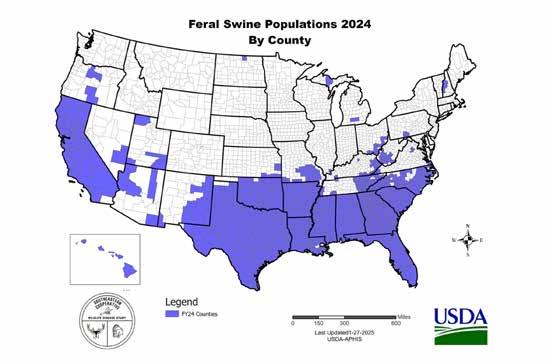

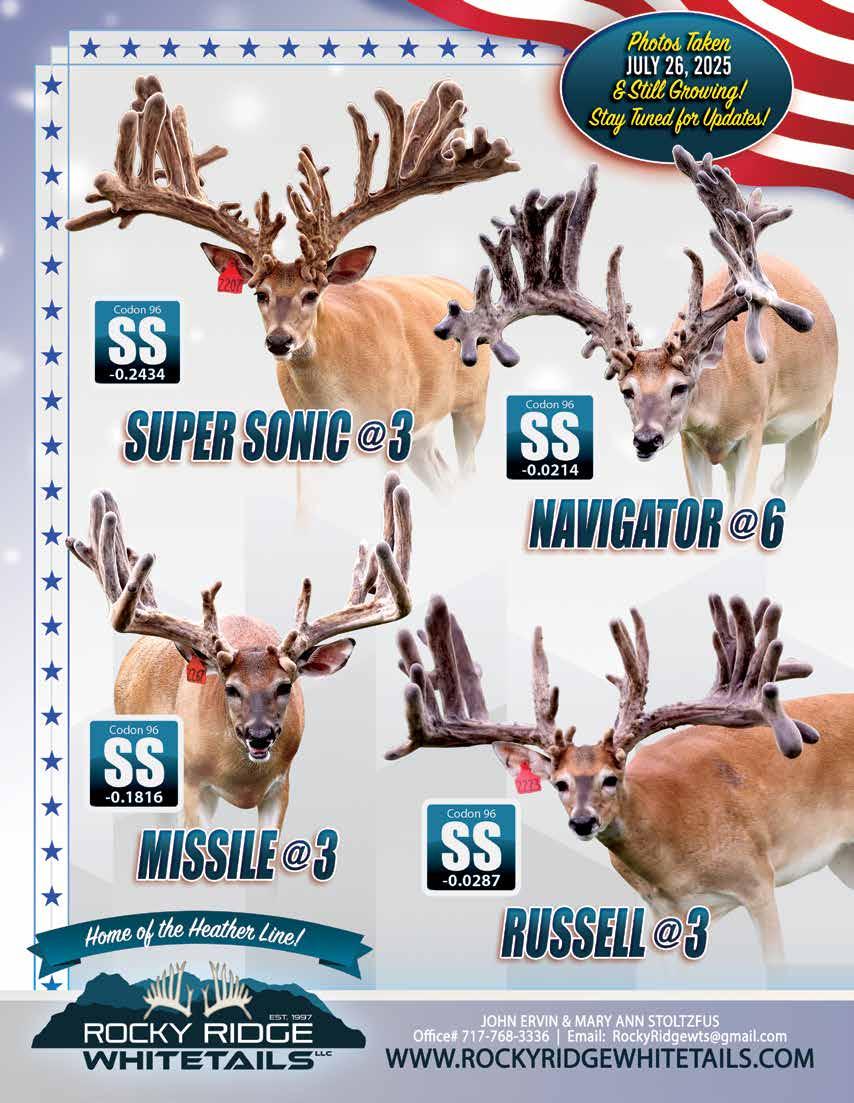
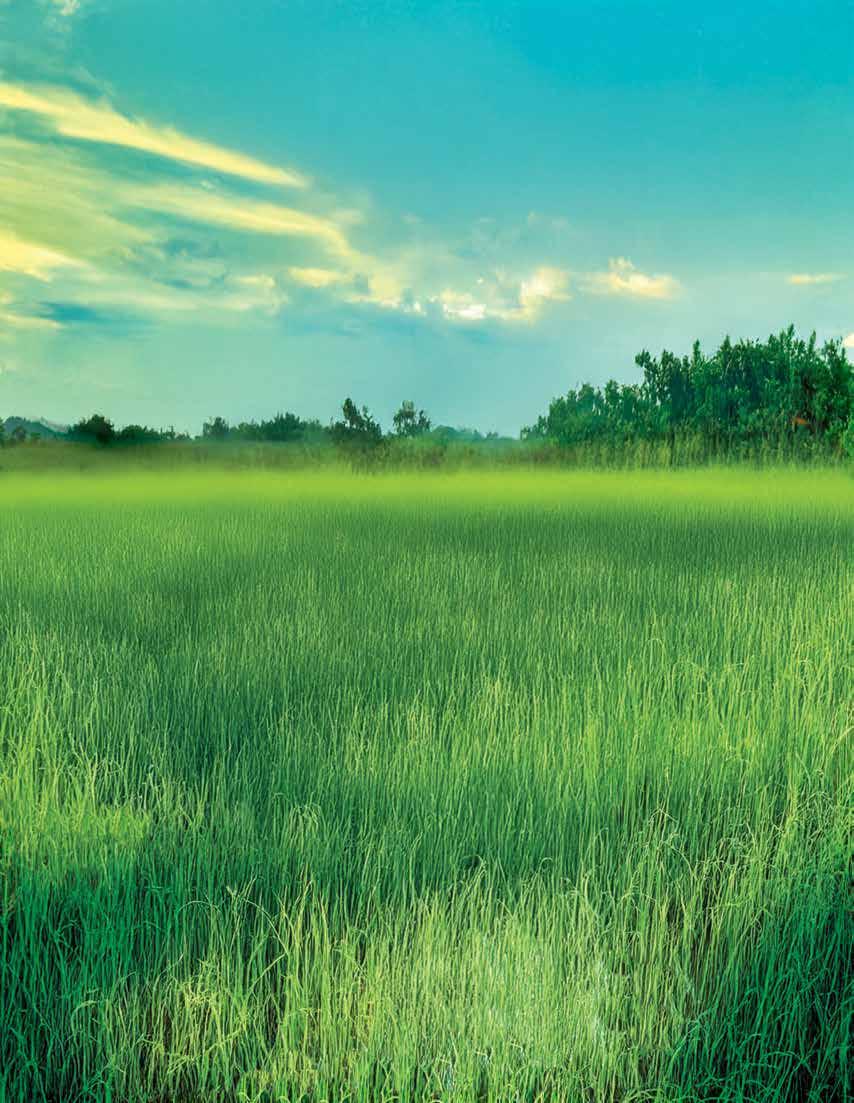
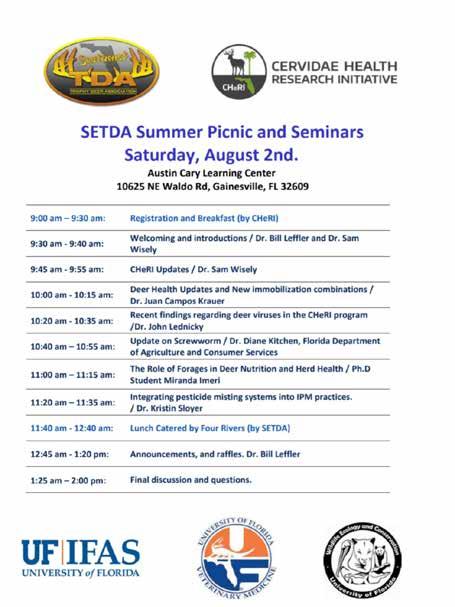
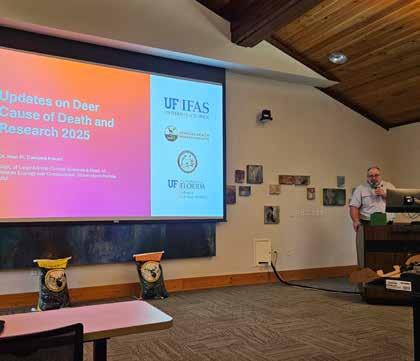
SETDA Summer Picnic
Couldn’t make it to the Picnic?
Here’s a quick recap of what you may have missed!

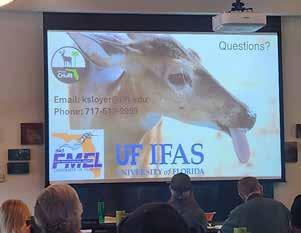
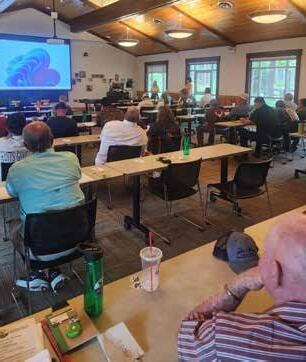
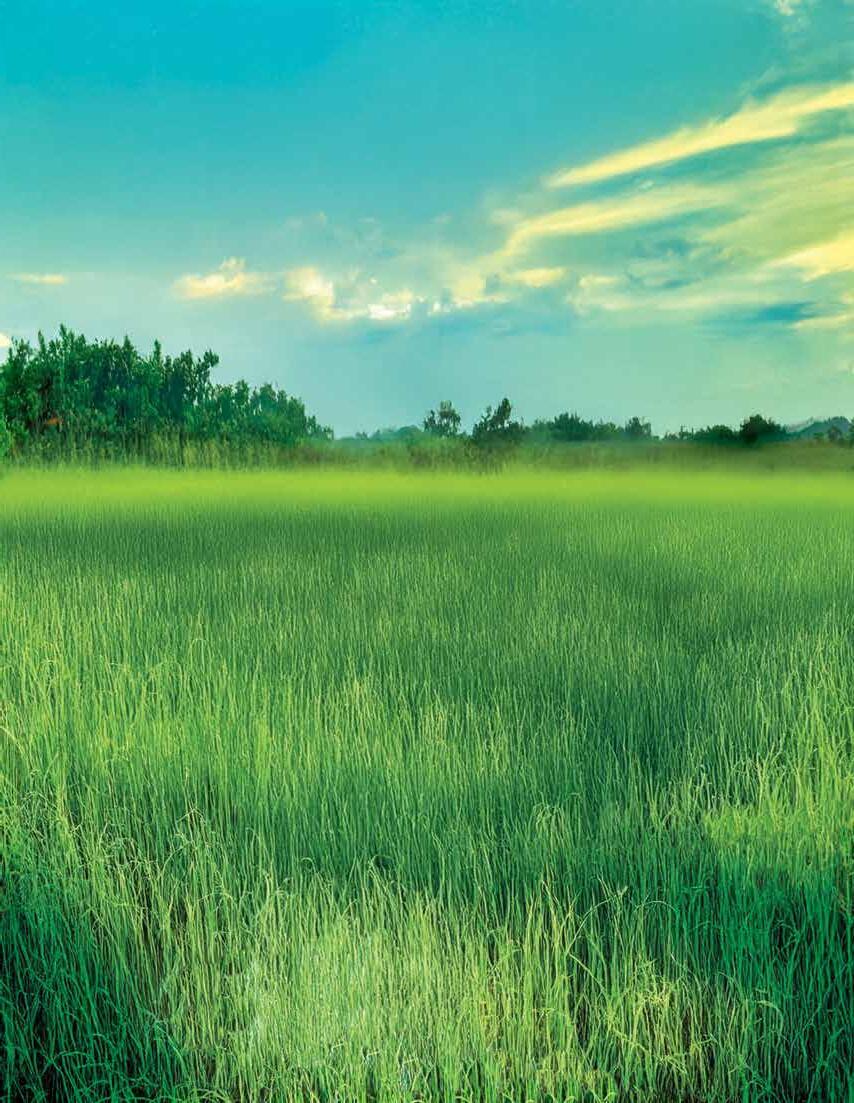
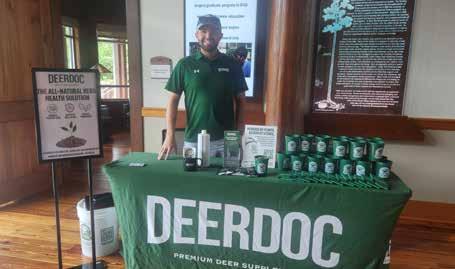
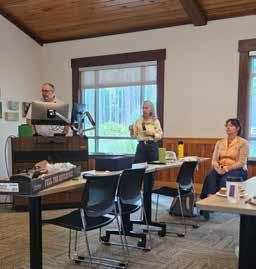
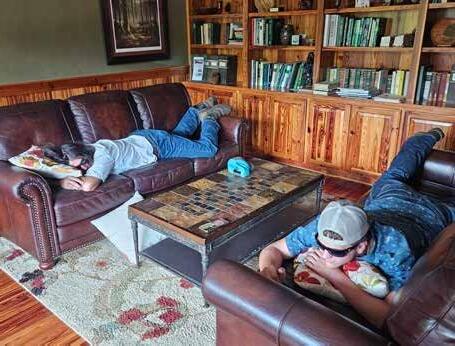
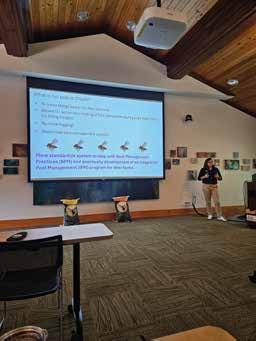
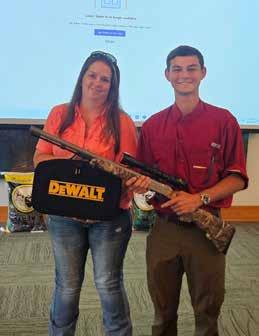
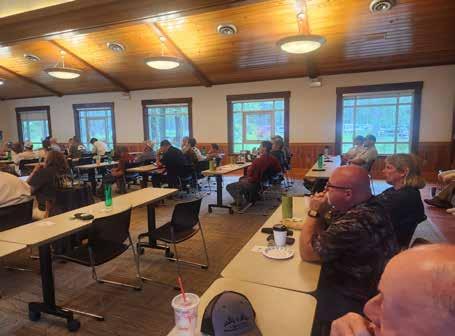
A sedation kit for every species or procedure.

MK2™ KIT - PROPRIETARY FORMULA
The most widely used MK™ Kit on the market today. Contains a higher concentration of medetomidine and ketamine than the original MK™ formulation which provides the ability to use less medication and a smaller dart resulting in improved accuracy when capturing.

Image: Sting & Zero Gravity (The Swamp Whitetails)
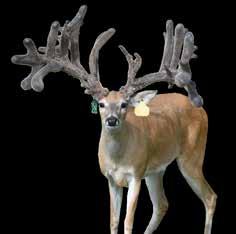

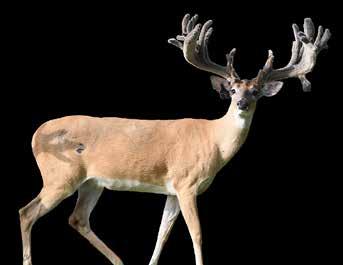
MKB2™ KIT - PROPRIETARY FORMULA
Contains higher concentrations of medetomidine, ketamine and butorphanol than the MKB™ Kit, which provides the ability to use less medication and a smaller dart, resulting in improved accuracy when capturing. It’s recommended for super exotics and large cervids that may be more difficult to sedate.

MKB™ KIT - PROPRIETARY FORMULA MKBM™ KIT - PROPRIETARY FORMULA
Developed by a zoo veterinarian to allow wildlife handlers to induce a reversible sedation, the MKB™ kit offers smooth induction with faster reversal times due to the lower concentration of ketamine. It’s recommended for sedation scenarios where the procedure being performed doesn’t require the animal to be on the ground for more than 15-20 minutes. Our MKBM™ Kit builds on our MKB™ combinations by adding midazolam to provide superior muscle relaxation and more reliable sedation. It’s recommended for the chemical immobilization of numerous large exotic hoofstock species including bongo, kudu, gazelle, eland as well as other African hoofstock and certain domestic wildlife species.

LEARN MORE
Disclaimer: The information contained in this advertisement is general in nature and is intended for use as an informational aid. It does not cover all possible uses, actions, precautions, side effects, or interactions of the medications shown, nor is the information intended as medical advice or for making an evaluation as to the risks and benefits of using a particular medication. You should consult with your veterinarian about diagnosis and treatment of any health problems. Information and statements have not been evaluated by the Food and Drug Administration (FDA), nor has the FDA approved the medications to diagnose, cure or prevent disease. Medications compounded by Mixlab are prepared at the direction of a veterinarian. Mixlab compounded veterinary preparations are not intended for use in food and food-producing animals. Mixlab does not recommend, endorse or make any representation about the efficacy, appropriateness or suitability of any specific dosing, products, procedures, treatments, services, opinions, veterinary care providers, or other information that may be contained in this advertisement. Mixlab is not responsible nor liable for any advice, course of treatment, diagnosis or any other information, services or products that you obtain through this advertisement.
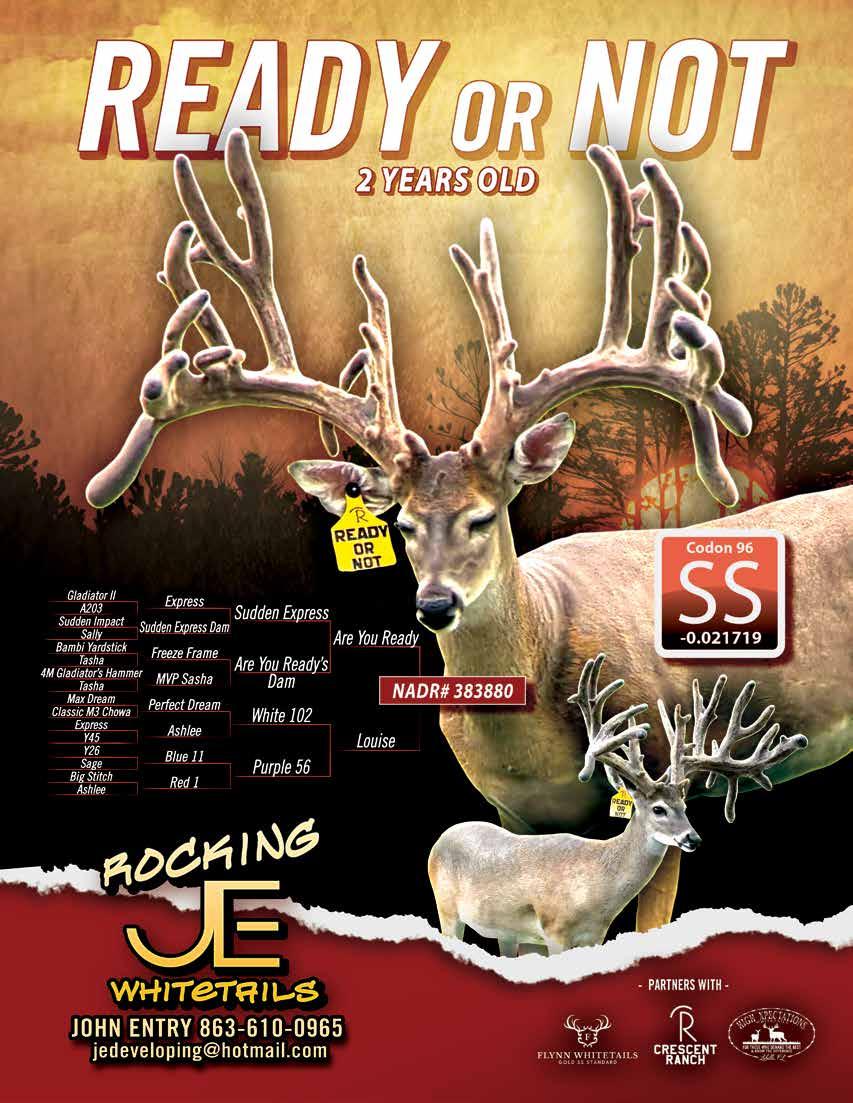
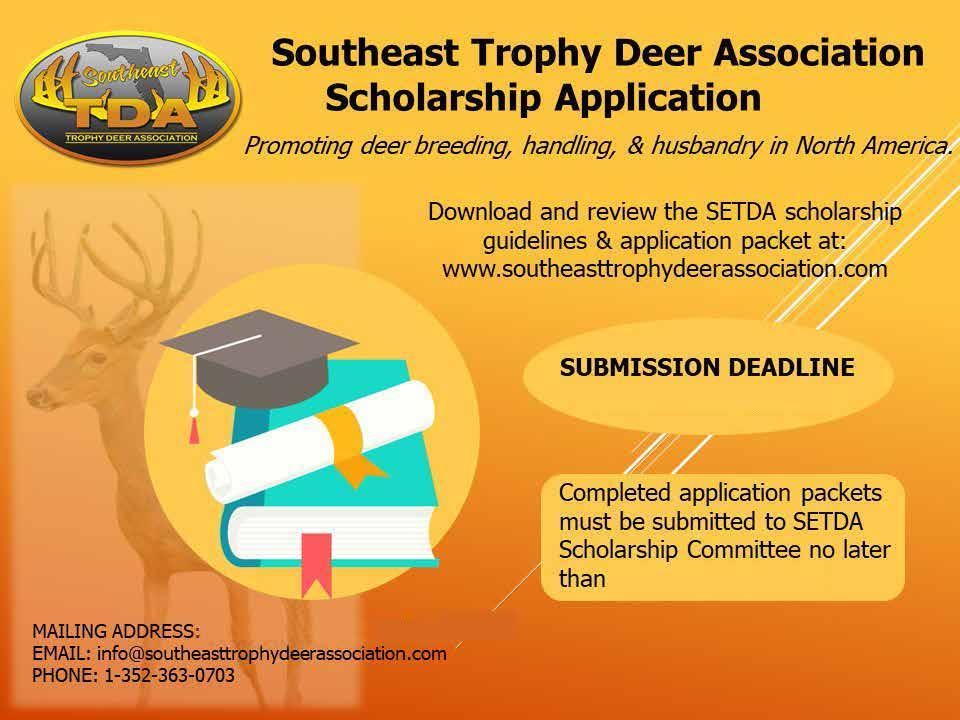
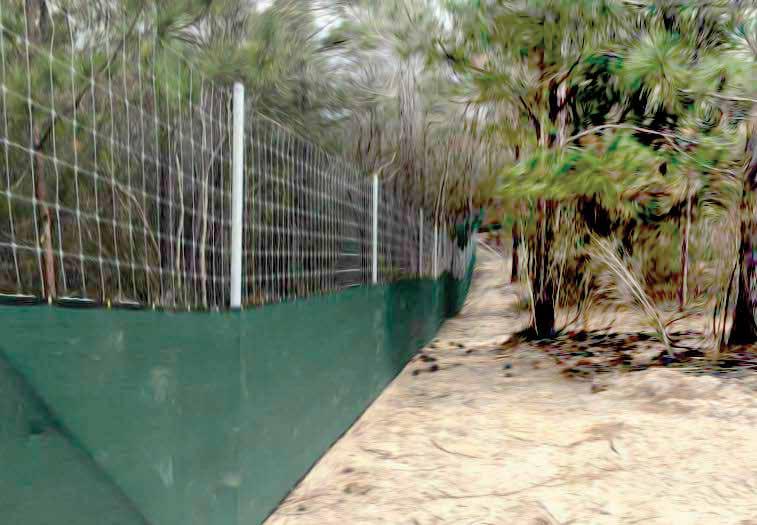
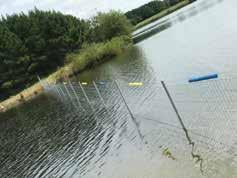

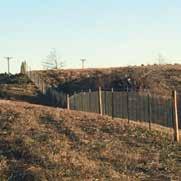


“


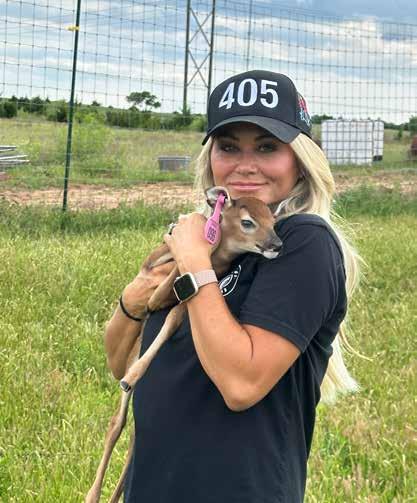
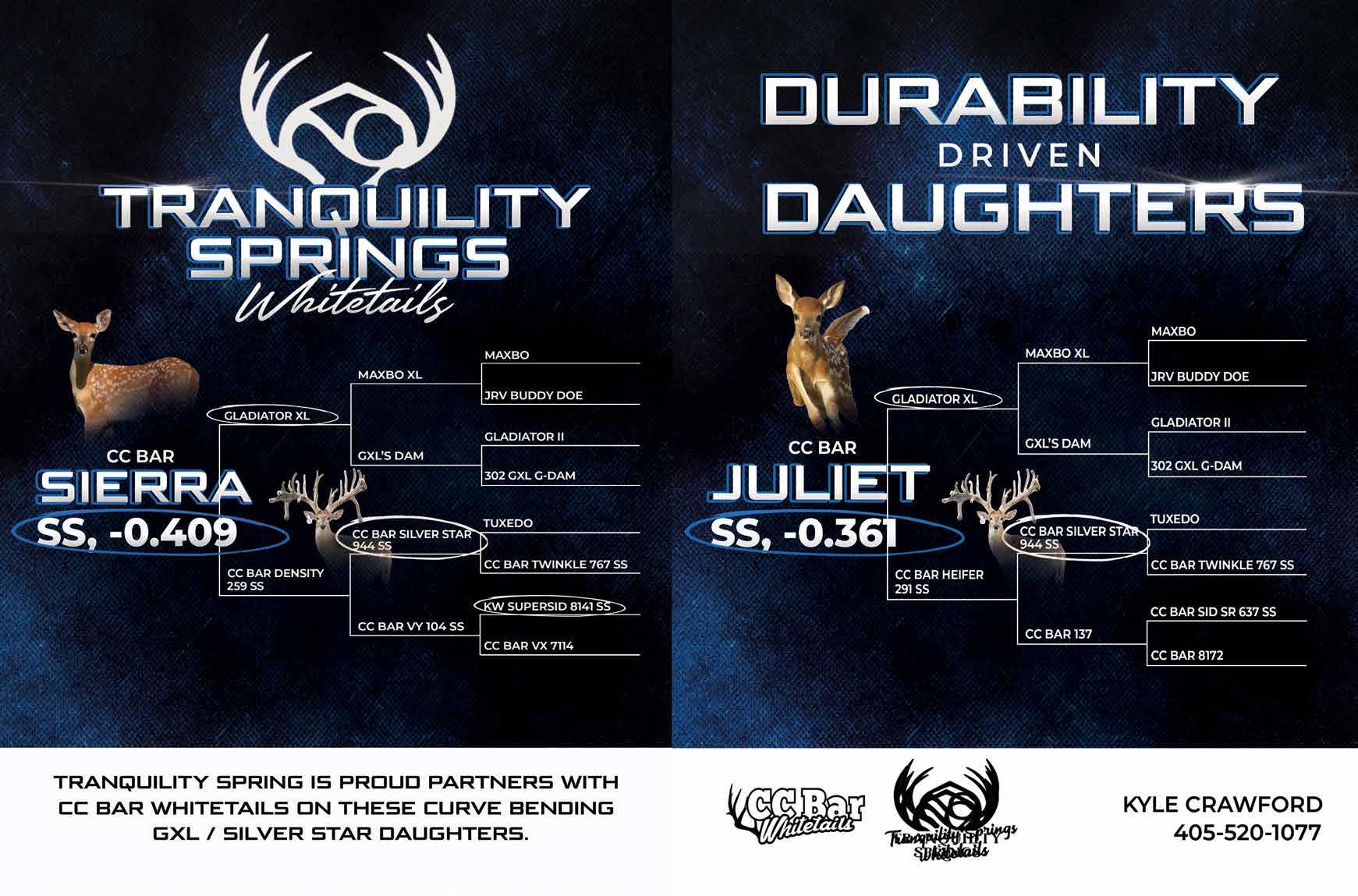



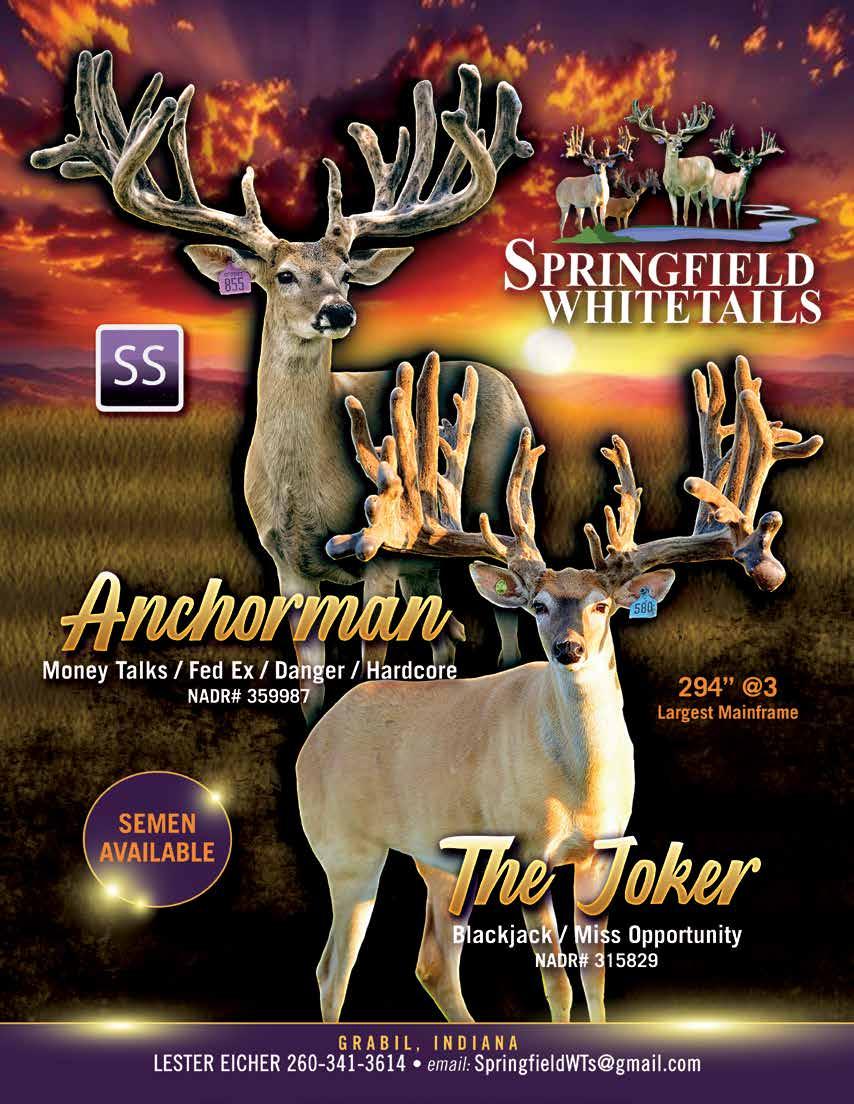

SETDA Featuring the Fight in Minnesota:
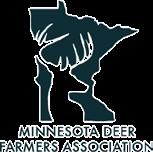

The people reading this article need to please understand the importance of this case. At first glance, this fight in MN seems to be a fight between deer farmers and the blue state of Minnesota. However, people across the nation need to realize, the District 8 Federal Court Ruling No. 24-2845, states that farming is not a fundamental right under the U.S. Constitution. How will this incredibly bad ruling impact you as a farmer? This ruling is empowering liberal cities, counties, states and three letter agencies that they can pass and impose harmful/over burdensome rules and regulations to discourage and destroy agriculture. The MN Deer Farmers Association is currently working on an appeal that will take this issue to the U.S. Supreme Court. If the Supreme court agrees with the lower court that farming IS NOT a fundamental right, a precedent will be set in the form of this ruling that “a state can grant the right to farm, and they can take away the right to farm.” If the Supreme Court disagrees with the lower court, they will be forced to create a decision and create law to protect and support agriculture from over burdensome regulations and attacks on our industry. Simply put: The deer farmers absolutely need to appeal this decision/issue to the Supreme Court, and they need to win!
This is a David and Goliath fight, the little battle torn deer farmers Association in MN is carrying a fight to protect agriculture all across our nation. The Minnesota deer farmers need our financial help, they are carrying this fight and the results of this case WILL directly impact your farming or ranching way of life. Please spread the word and consider making a donation today at https://gofund.me/664ed22e
Thanks!
Steve Porter
218-526-0180
Support MDFA HereLink to GoFundMe page:

Here is the link to Steve Porters Facebook post:

https://www.facebook.com/ share/v/16hLhkkyiE/
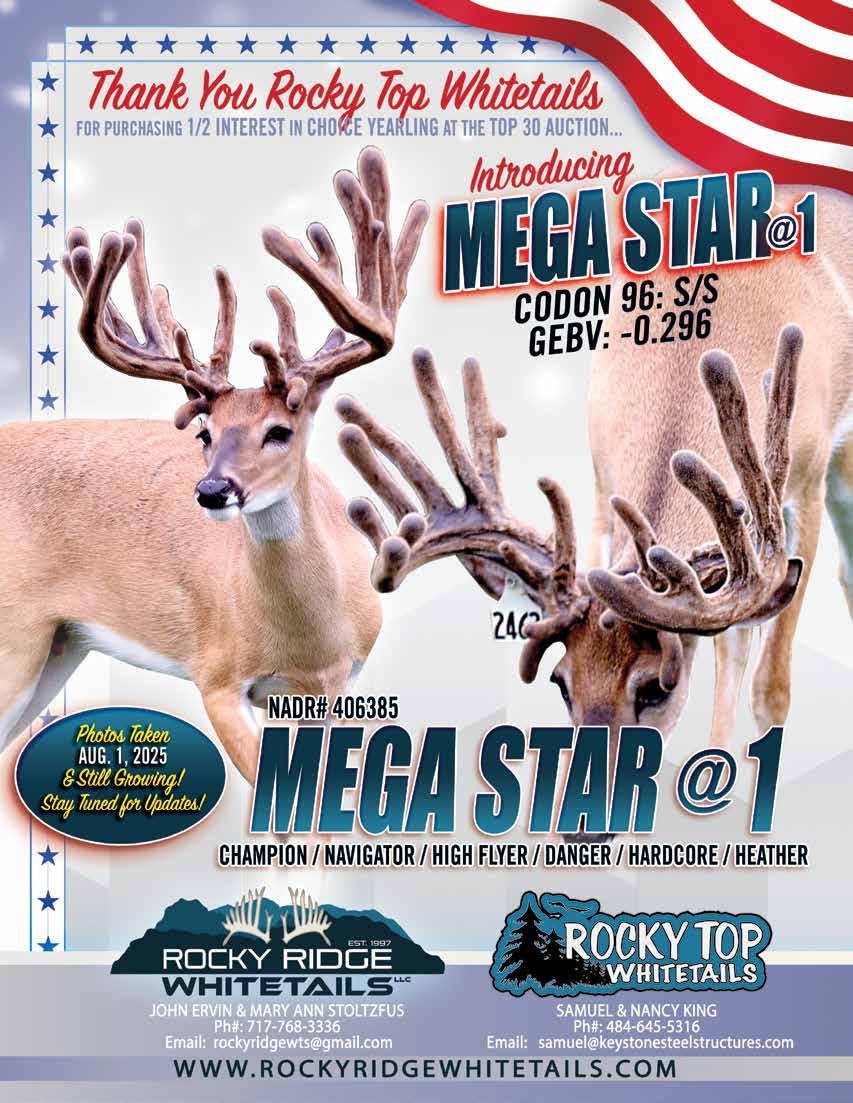
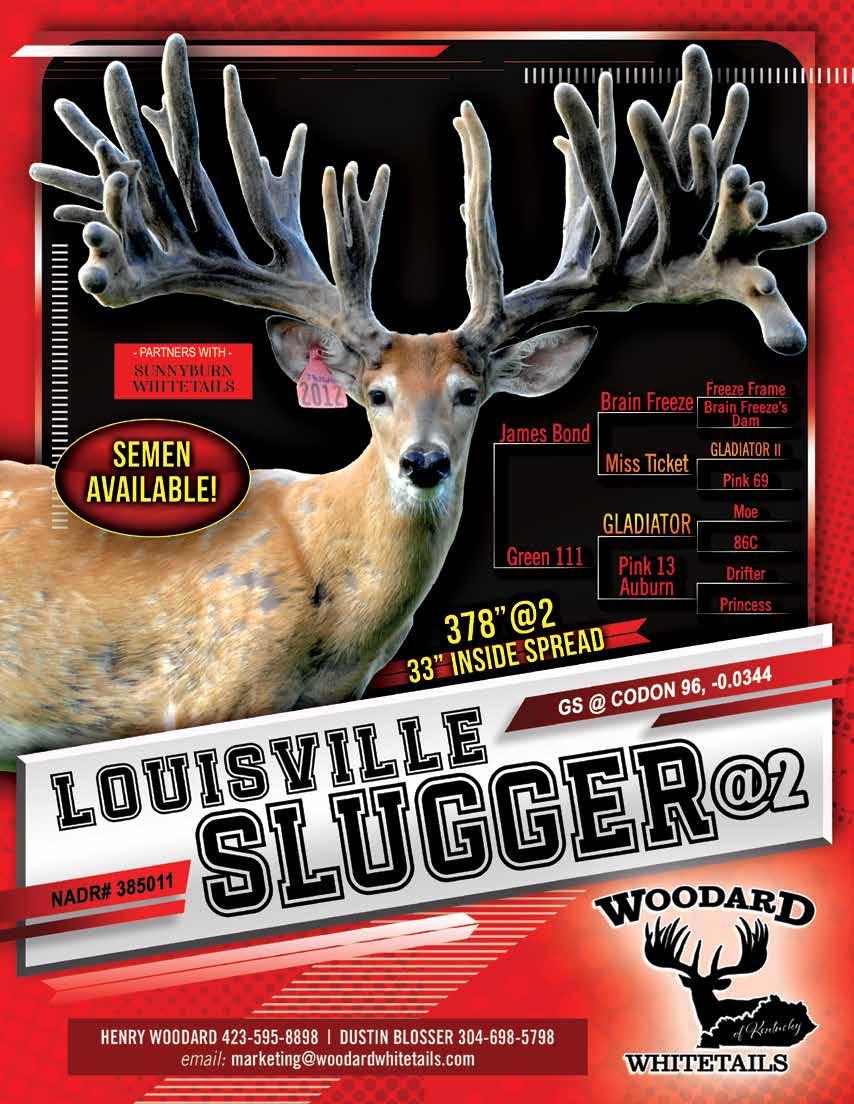




Magazine Deadlines & Event Calendar
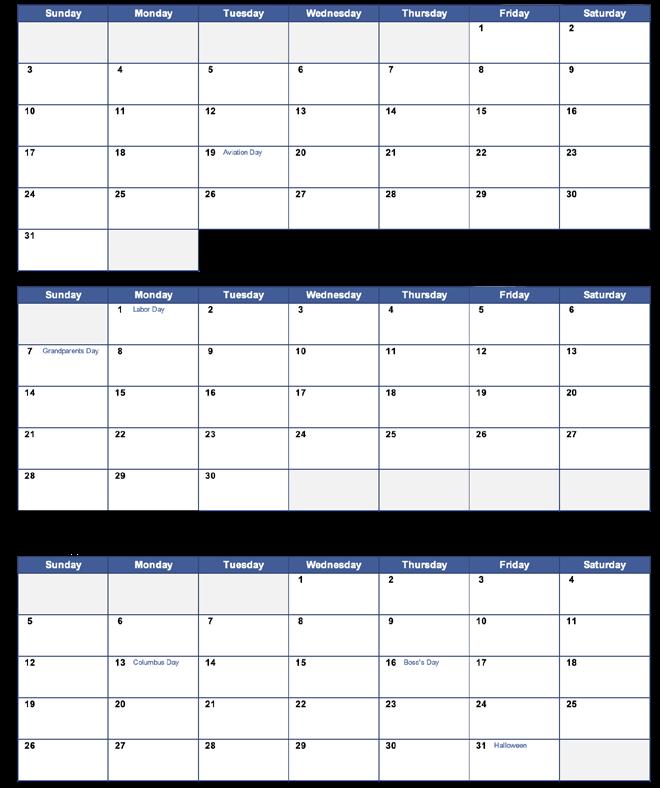





Picnic
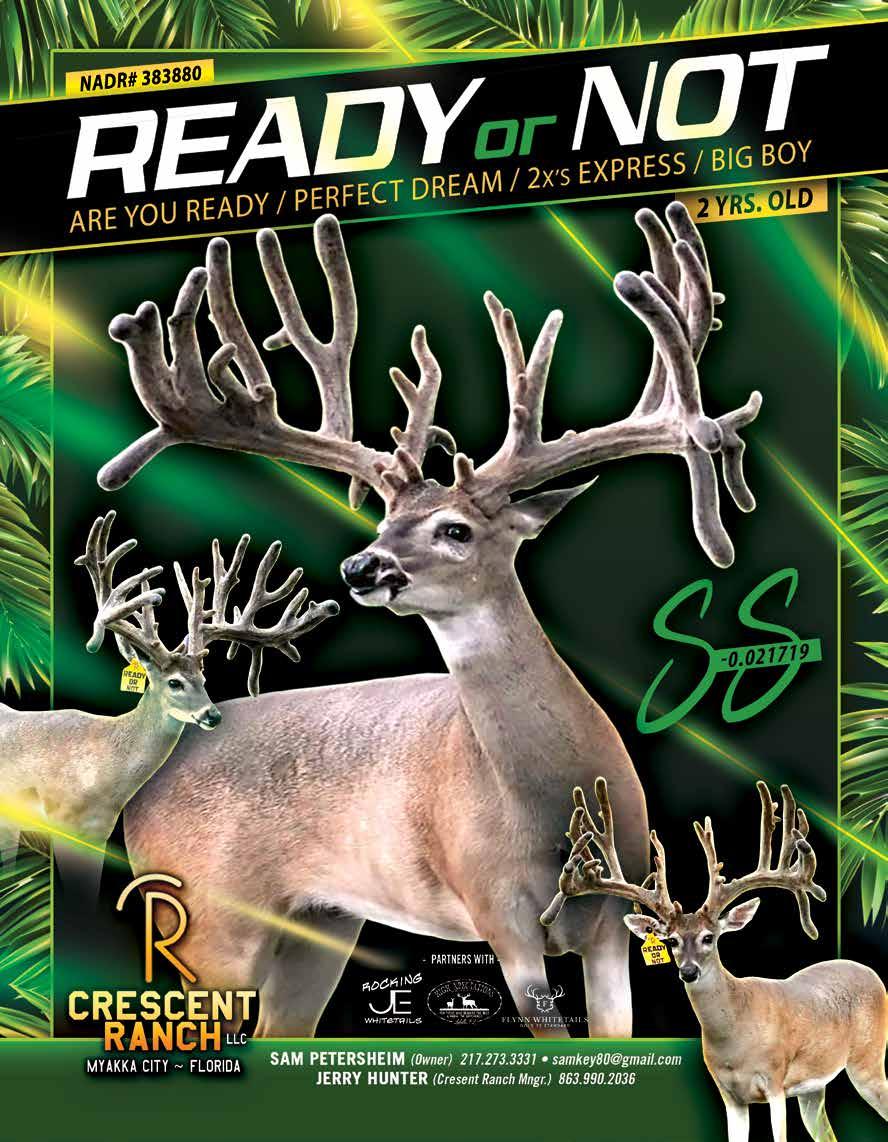
OUR TRIP TO AFRICA AWAITS
We bid on and won the Africa Awaits Lodge & Safaris Trip in Namibia, for 7 days with 3 hunters, at the SETDA 2024 Spring Fling. We added a 4th non-hunter to the safari. What an AWESOME time we had.
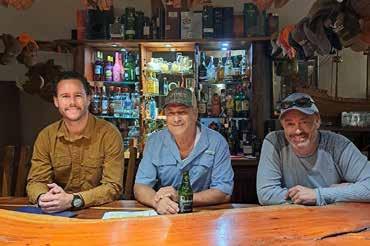
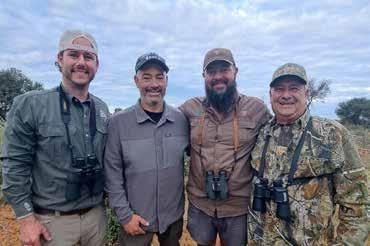
The grounds and villas at the lodge were beautiful. Breakfast, lunch, and dinner were served everyday and each meal was amazing. We were greeted, shown around, and taken out the first evening for target practice. We used their rental guns that had suppressors, which were a great feature.
We started each day at 6 a.m. by enjoying our served to order breakfast in the lodge dining room. Afterwards we left with our guide and scout in a 4x4 open rear seated hunting truck for our morning hunt. Each day’s hunt was in different locations, each of them 1000s of acres of new terrain. We spotted wildlife by truck, then walked and stalked our trophies. Our wish list consisted of Oryx, Hartebeest, Warthog, Zebra, Impala, Black Wildebeest, Blue Wildebeest, Jackal, and Spring Buck. While hunting we enjoyed seeing other animals such as Giraffe, Kudu, Eland, Ostrich, Rhino, beautiful birds, and other game.
Mid day we headed back to camp for an amazing lunch. After lunch we would have an hour or so to swim, sit at
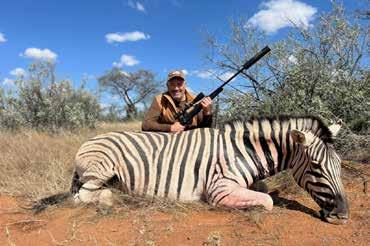
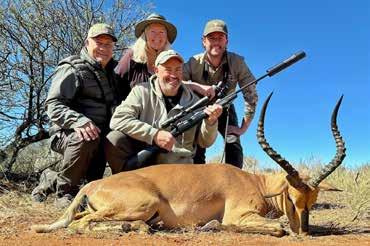
the main lodge, visit, tell stories, relax on our villa porch, or nap before we were off again for our evening hunt. We got to know our guides and made lasting friendships as we laughed and told family stories and happenings of the day.
At dusk we headed back in to freshen up for dinner. The bar was open for purchased drinks each evening. We would sit and have appetizers and drinks around the fire-pit while over looking a lit up waterhole surrounded by wildlife. We talked and shared hunting stories with other hunters and visitors from around the world. When called for dinner we would find a large table set up inside, on the porch, or even by an open grill area near the pool. All the hunters, guides, and owners would share the meal together. The table and drinks were always displayed beautifully. Dinners consisted of hunted game meats, vegetables, and dairy products right from the farm, sharing traditional cuisines. Each meal was delicious, served with wine or drink of choice, presented nicely, and was always a great time spent
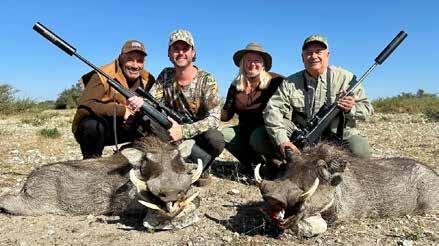
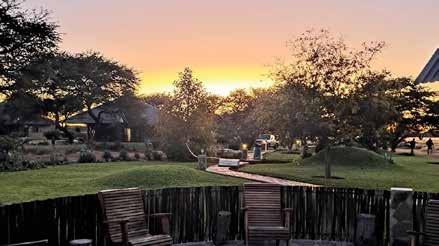
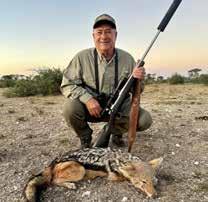
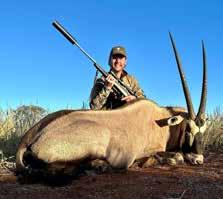
together. Later we would sit around and enjoy the millions of stars and each other’s company.
The Africa Awaits Lodge is ecofriendly and self-sustainable with solar energy, and fire heated water tanks. Fires would be lit every evening and morning under the heaters. The workers who live on the grounds cook, serve, clean your room, and wash your clothes daily. The staff keeps the grounds beautiful, even making their own furniture. With 5 duplex villas the lodge is open to travelers visiting the area along with booked hunters. This allowed us to meet and enjoy people from all over.
Our guide came from hours away and stayed the whole week with us on the grounds. He was amazing. We also had a spotter/tracker who lived on the grounds and would come with us each hunt. Back at the lodge we had a skinner who also lived on the grounds. We watched him skin and tag our 13 trophies.

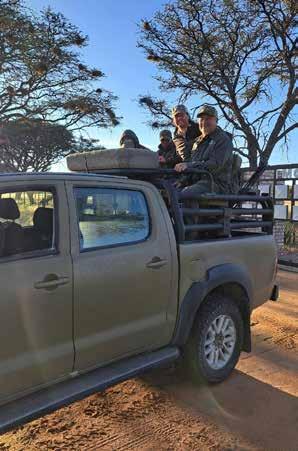
We planned ahead to extend our stay in Africa to see as much of the continent as possible while there. After our hunt we visited Victoria Falls in Zimbabwe/Zambia, then Kruger National Park and Cape Town in South Africa. We saw so many amazing places and enjoyed local restaurants, native shows, wineries, and lots of landmarks. We were in Africa for 18 days, and the only thing we would change is to be able to stay longer. We loved each and every day of our trip.
Thank you SETDA for all you do and presenting this opportunity. We may have never experienced Africa if not for your Spring Fling auction.
We hope to go back someday.
Joe, Donna, Joey, and Daniel Barcia




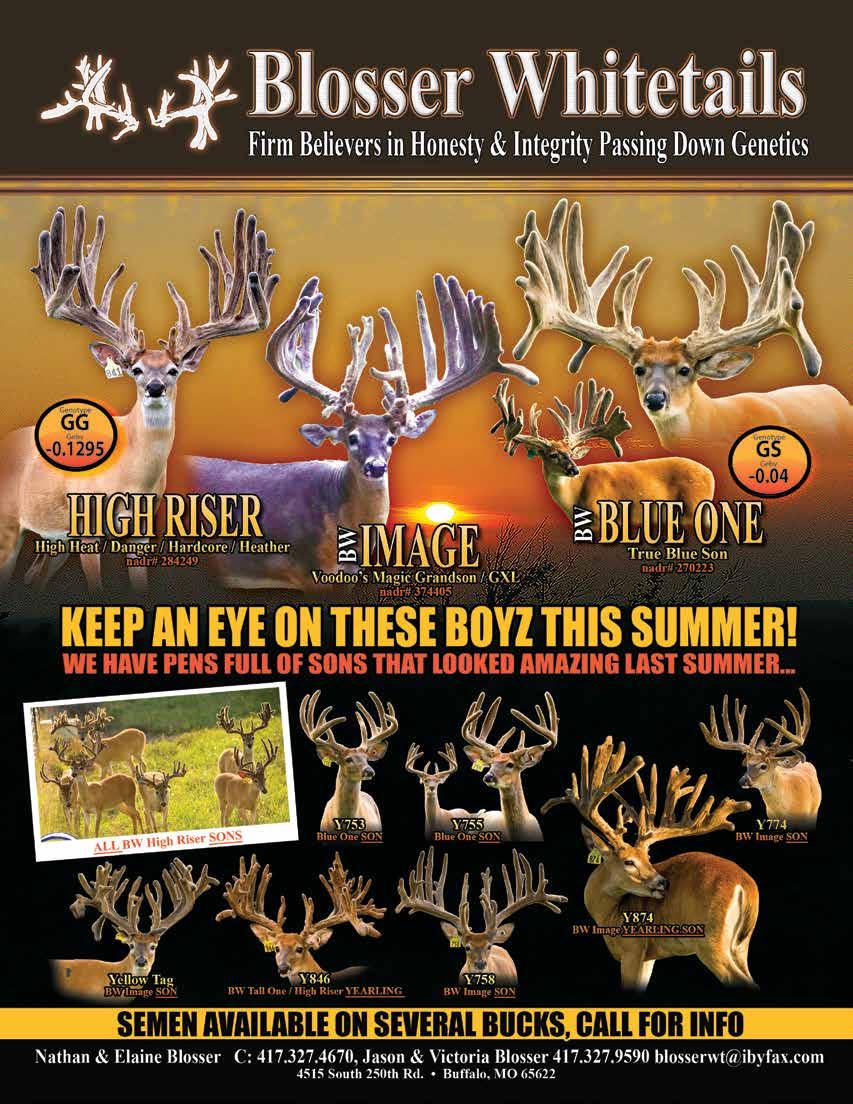
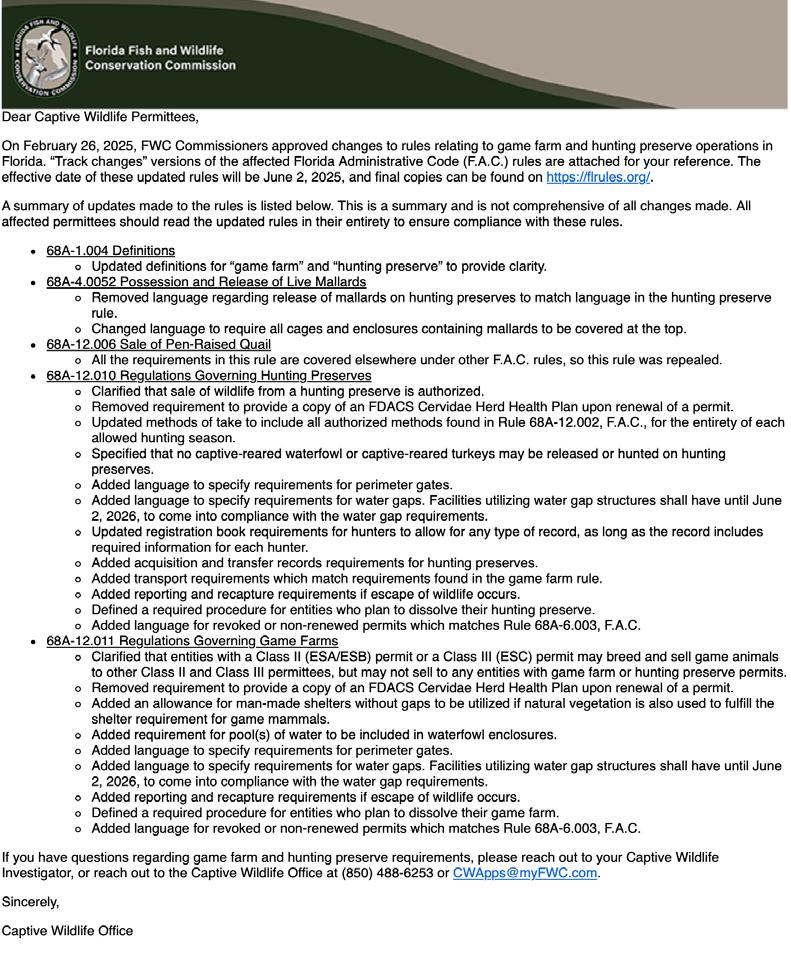


SETDA Spring Fling
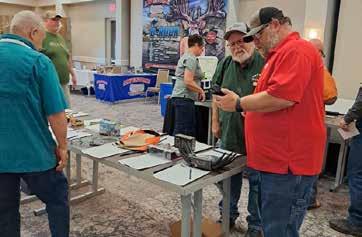
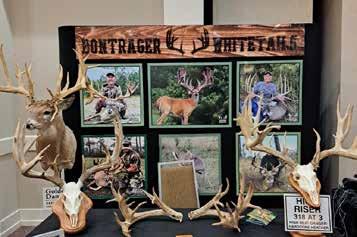
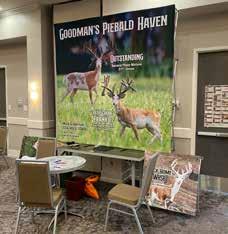
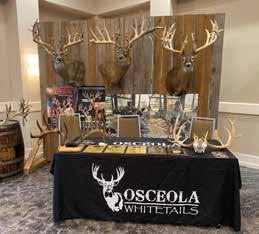
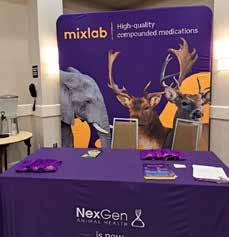
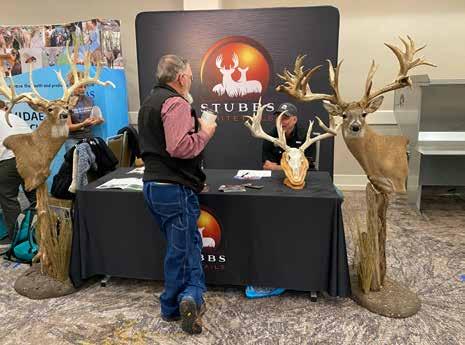
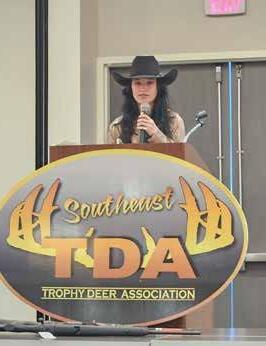
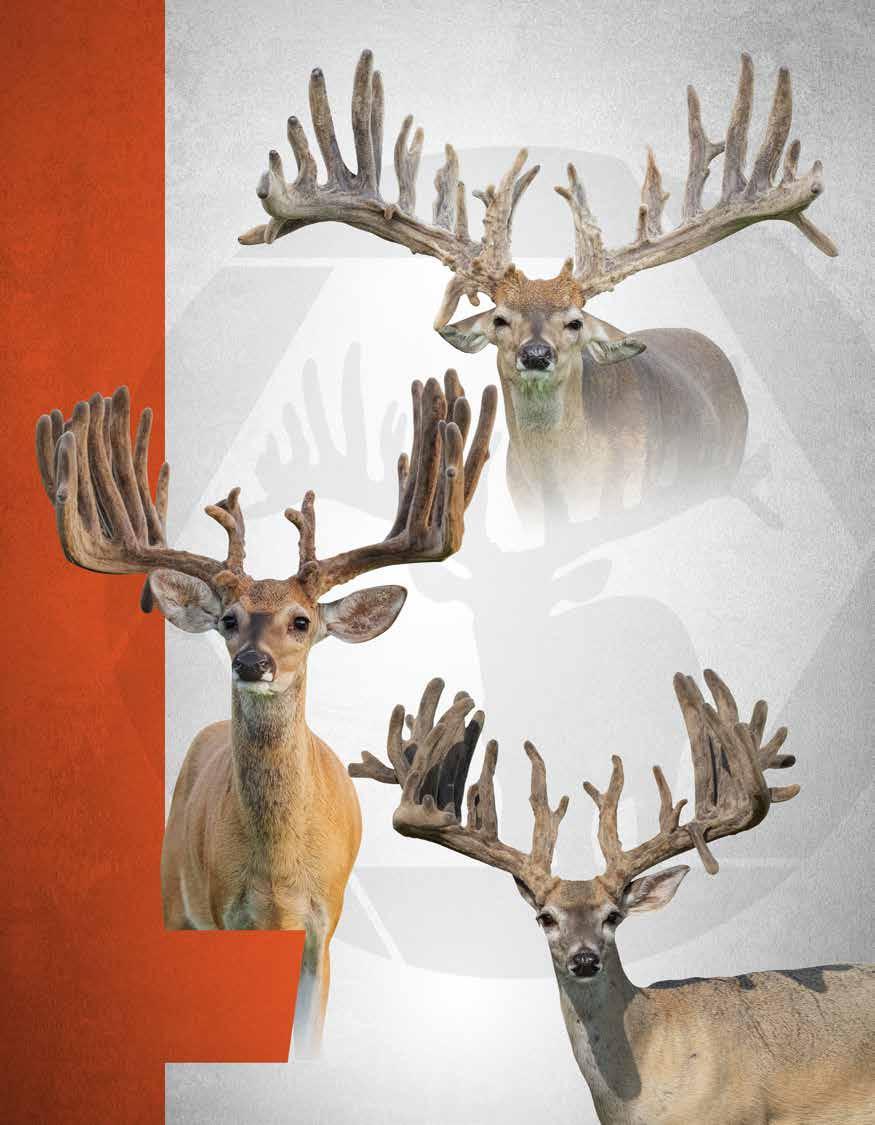

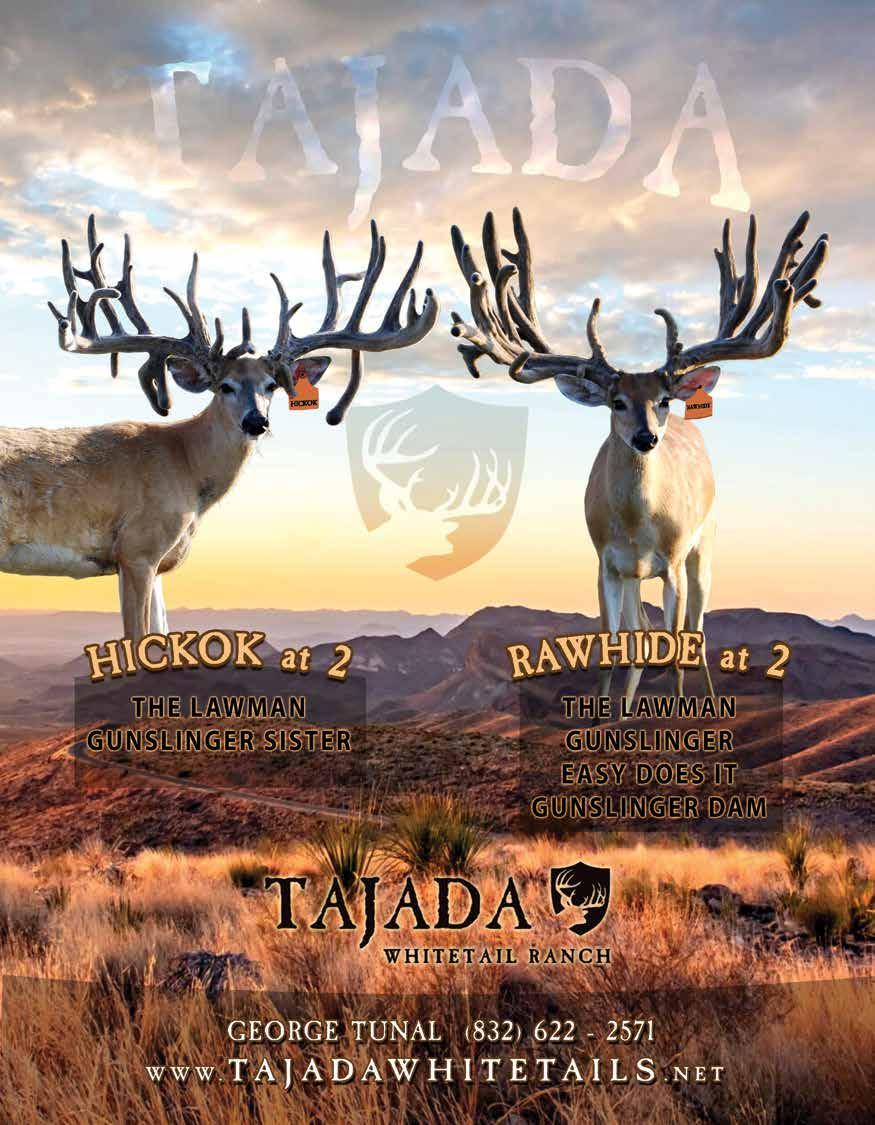

Are you sprayi ng at the ri ght ti me?
C ont ro ll i ng bi ti ng mi dges
Biting midges
• Biting midges are small blood-feeding flies
• There are more than 150 species of biting midges in the United States
• Some biting midge species in the United States can carry viruses that are dangerous for deer, sheep, and other ruminants
• Some biting midges can transmit epizootic hemorrhagic disease virus (EHDV) and bluetongue virus (BTV), which cause great morbidity and mortality in deer


A survey of Florida deer farmers indicate that farmers rely on insecticides for biting midge control
• In Florida deer farms, biting midges are typically managed using ultra-low volume (ULV) spray applications, commonly known as “fogging“ or “spraying”.
• Deer farmers generally apply permethrin -based products against biting midges . Some examples include Permanone 30 -30 , Perm-X, and PermaSease 4-4. Although the product name varies, all of them are made with permethrin as the main ingredient for killing midges .
What is the best time for spraying?
• Pyrethroid insecticides such as permethrin, applied as ULV do not last a long time in the environment Therefore, sprays should take place at the time of day when the target insect (biting midges) are most active, to ensure that the insecticide finds and kills the insect.
• Deer farmers generally spray during dusk and dawn, under the assumption that this is the time of day when biting midges come out (like most mosquitoes). However, we recently found out this is not the case.
• Trapping conducted in Florida deer farms showed that biting midges that transmit EHDV and BTV are most active late at night.
• We recommend deer farmers to spray between 9 pm and 4 am (during the dark period of the night) to maximize the effectiveness of permethrin -applications.
Additional considerations
• “The label is the law”. Please follow the product label for instructions in how to use the product safely
Additional resources
• Pest Information Office https://pested.ifas.ufl.edu
• CHeRI educational resources
https://wec.ifas.ufl.edu/ch eri/additional-resources/
Contact us for more information:


@ vilmalikesflies
@UF_IFAS_CHERI wec.ifas.ufl.edu /cheri vilma.montenegro@ufl.edu
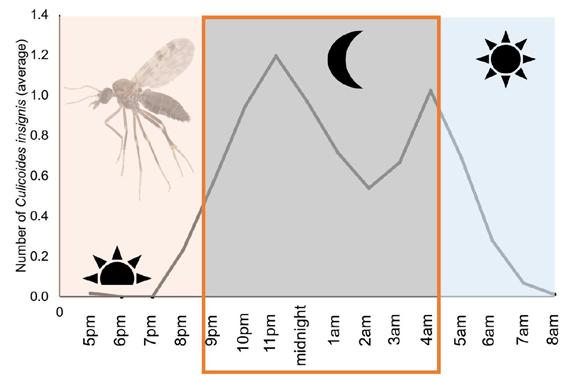
Spray during this time
Authors: Vilma Cooper, M.S., Samantha Wisely, Ph.D., Juan Campos-Krauer Ph.D., & Nathan Burkett-Cadena, Ph.D. University of Florida, Cervidae Health Research Initiative ( CHeRI) and Florida Medical Entomology Laboratory.



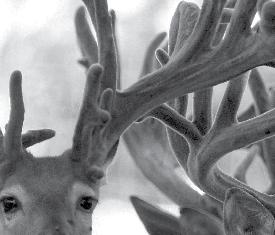
Does the sound of antlers clashing make you cringe each fall?

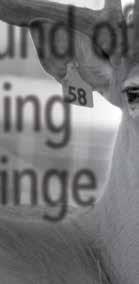

PEACEMAKER
™



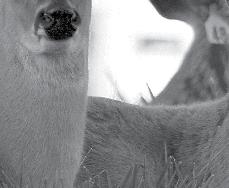
NOW ENHANCED WITH APPETITE STIMULANTS & PROBIOTICS!

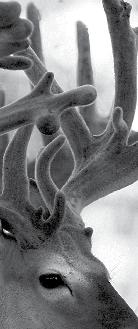



















DESIGNED TO HELP INCREASE YOUR PEACE OF MIND... WHEN YOU NEED IT MOST!

Rut and reduced feed intakes can bring out the worst in bucks and irritable behavior can rear it’s ugly head!
PeaceMaker is scientifically formulated to provide optimal support levels of magnesium, Vitamin B1 and inositol to help maintain a normal and relaxed disposition in cervids
Now enhanced with appetite stimulants and probiotics for digestive health
Contains no herbals nor tryptophan, eliminating concerns of unwanted side effects
Use PeaceMaker™ to help “keep the peace” during pre-rut, rut, transportation and other key times during the year
Now available in a 30 lb resealable bag and 11.25 lb pail to help fit your operation’s needs
FAWN & DEER XTR™ PASTE R

ROBUST, FAST GI SUPPORT FOR FAWNS & OLDER DEER

Designed to quickly support normal GI health
Novel formula delivers powerful immune support
Can be used post tranquilization to help speed recovery











ENTERIC HEALTH FORMULA™

DIGESTIVE HEALTH & IMMUNE SUPPORT CERVIDS OF ALL AGES

Supports digestive health and a healthy immune system
Natural formula contains Encrypt®, egg proteins, enzymes, micro-encapsulated probiotics and a prebiotic
Top dress or mix in feed during fawning season, weather changes, times of stress and when top performance is desired





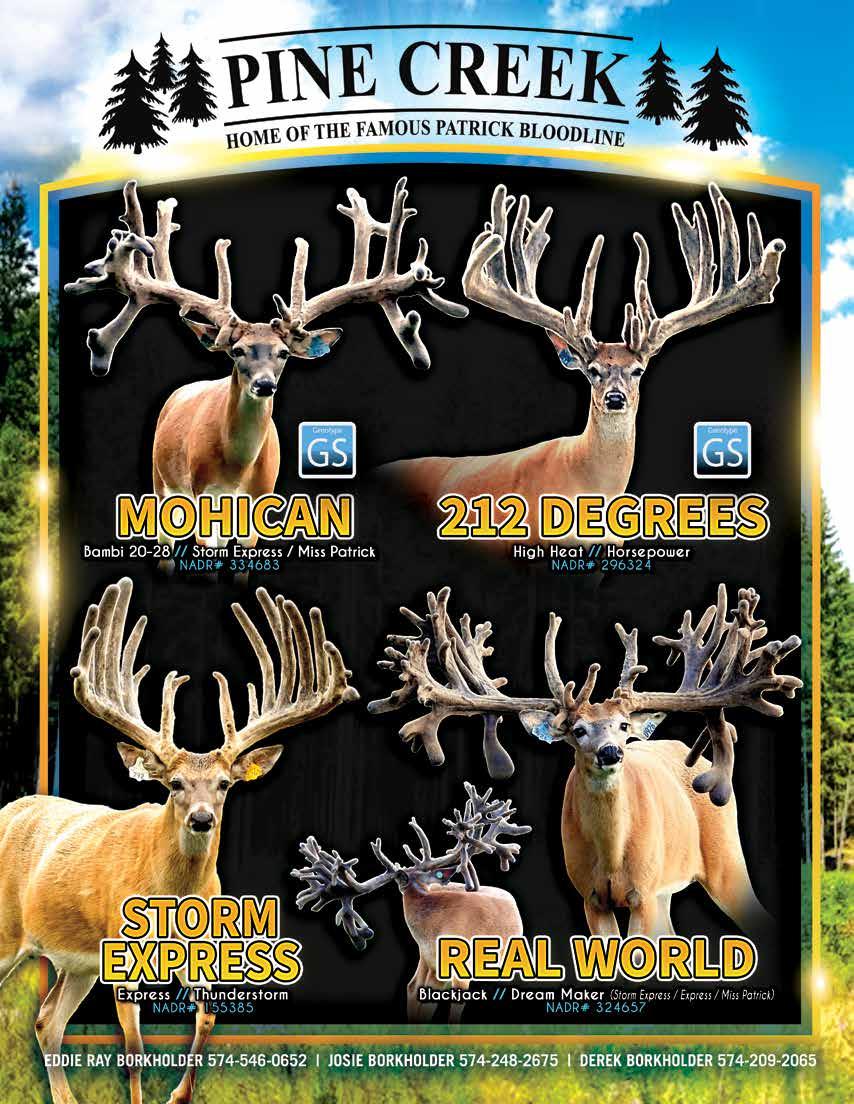
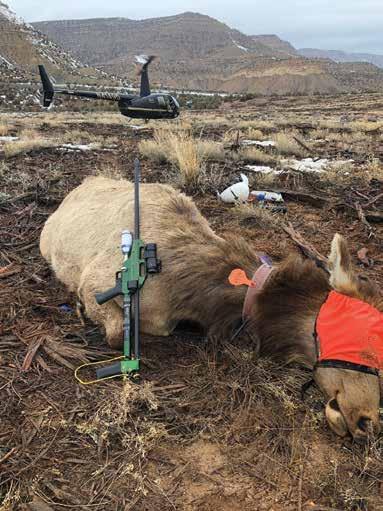

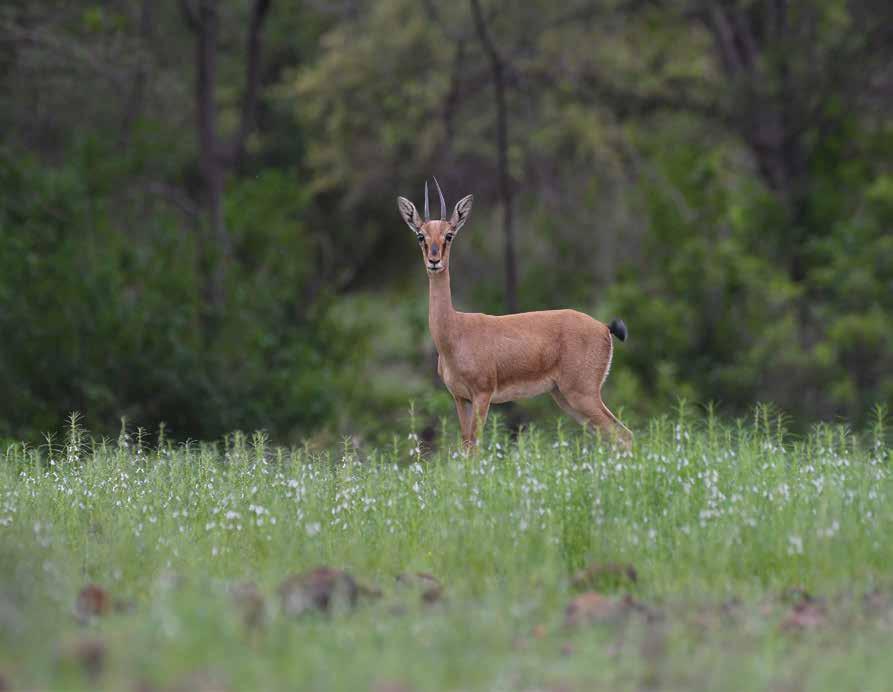


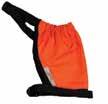

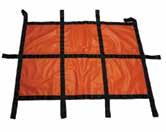




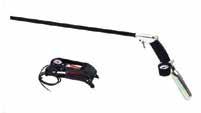
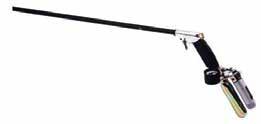
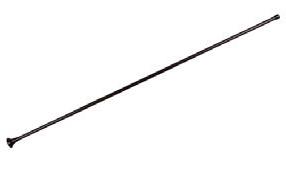
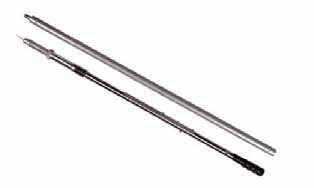

DREAM GENOMICS
DEVELOPING CUTTING EDGE CWD DETECTION TEST
By: Gail Veley • Sponsored by the Kansas Alternative Livestock Association
Early, non-symptomatic detection of CWD in a whitetail herd could become as simple as drawing blood, thanks to a revolutionary diagnostic test currently being developed by Dream Genomics. Based out of Northbrook Illinois, Dream Genomics is a newly developed visionary biotech firm started in 2023, whose energy and efforts are fully invested in the “Discovery Phase” of developing a reliable, ultimately fool-proof and scientifically recognized CWD detection blood test. Leading the charge for Dream Genomics is Dr. Gary Pusateri, CEO and Founder, Michael Falduto, Chief Technology Officer and Founder as well as Dr. Scott Magnuson, Chief Scientific Officer and Founder.
Along with developing a reliable test, are the challenges of buying equipment to continue the research along with obtaining adequate
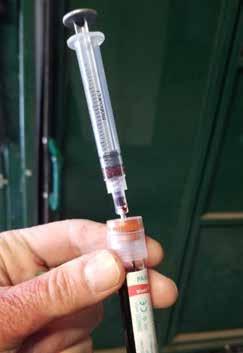
numbers of positive CWD samples. Dream Genomics is actively searching for sponsors and donors in the form of corporations, deer associations and private individuals to continue on this quest.
NADeFA and The Cervid Livestock Foundation (CLF) have donated substantial seed money to Dream Genomics, in an effort to keep the research ball rolling and to help purchase testing plates or “chips” as they are commonly called.
Chips, an array that looks at all the genes in a deer’s genome and measures the gene expression via profiling using RNA, fully measures a deer’s response which creates a “bio-profile” for early detection. This technology could perhaps also be used to “stage” the disease in the fact that it will be specifically used at the front end of detection, and not the back end.
Unlike old traditional testing methods which examine CWD prions in already infected organs, this new test is being designed to preemptively find CWD in a singularly fashion, before symptoms develop and before others in a herd are also affected. “Their progress is amazing,” said NADeFA President Shawn Schafer. “This could completely change everything in the industry as we know it right now. Gone may be the days of five-year quarantines or repeatedly extracted rectal samples.”
Resounding in the deer industry is the common goal to eradicate CWD and to develop a minimally invasive diagnostic test, explained Dr. Pusateri. “Once adequate project funding has been established and
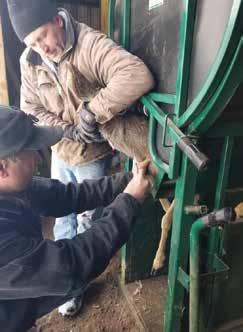
enough positive samples have been acquired, Dream Genomics can move towards biological confirmation that our test is accurate,” he said. “We strongly believe that we can reach our goal of making this real and attainable.”
Anyone interested in donating towards Dream Genomics research, please contact Dr. Pusateri at his office at 847-291-9602 or his cell phone at 715-891-7878 or email him at gpusateri@dreamgx.com. You can also check out the website at www.dreamgx.com.
LIGHTER WEIGHT. MORE EFFECTIVE.
MINIMAL
TRAUMA.
IF YOU HAVEN’T TRIED PNEU-DART’S RDDS, YOU’RE MISSING MORE THAN YOUR TARGET

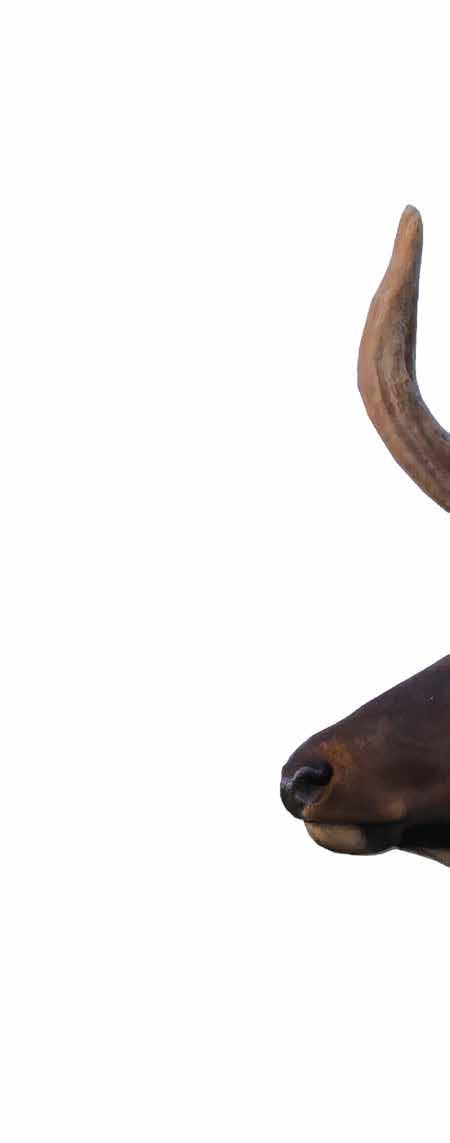
PREPARING DOES FOR BREEDING SEASON ADVICE FROM ALABAMA
By: Gail Veley • Sponsored by The Alabama Deer Farmers Association
Successfully getting your does from the weaning pens to the breeding pens can be considered somewhat of a science, perfected through the course of experience combined with a little trial and error. “Breeding plans can get complicated with everything you need to consider such as CWD resistance, pedigrees and antlers,” explains Cameron Odom, owner of Five O’s Ranch, a 41-acre spread begun in 2015 in Citronelle, Alabama. At Five O’s Ranch, a farm which is currently home to 140 deer that is expecting close to 100 fawns in the spring, “we make every effort to make sure our does are as healthy as they can be and ready for breeding season.”
At the forefront of these preparations should be the constant monitoring for and prevention of EHD. The city of Citronelle, known since 1955 as the oil capital of Alabama and located 34 miles north of Mobile, has its fair share of annual rain and occasional hurricanes and along with that a higher prevalence of bacteria, midge flies and EHD.
“If a doe has had a bout of EHD close to breeding season, I highly recommend not putting her through the stress of A.I.,” Odom, 48, said. “At our farm, we would breed her naturally instead through live cover.”
To have the healthiest does, a diet high in quality hay, grain and minerals is recommended yearround, with an increase of those things during the winter and spring months as fawns are developing, born and raised (simultaneously along with future breeding plans and preparations.) “I feel this is something every farm should practice, along with regular wormings and vaccinations, to ensure their does have appropriate antibodies and that their body condition is good,” Odom said.
Body condition and overall health also factors into weaning fawns. “If one of your does becomes sick in August or September, it’s not recommended that you compound the situation by pulling fawns off,” Odom said. “Wait a couple weeks
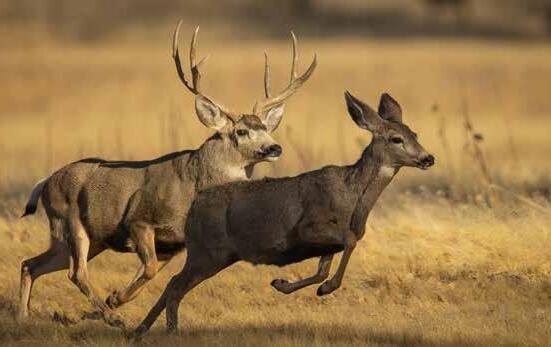
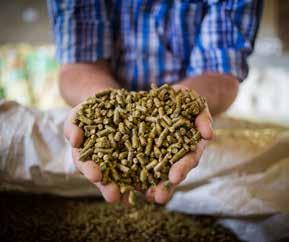
or so until she is healthy again. Remember you want your does as strong and as healthy as they can get as breeding season approaches.”
A strong hunting economy, perpetuated by an abundance of state-wide preserves, means the demand for deer is high. In Alabama, a closed-border state, maintaining healthy deer herds is essential to the long-term success of every deer farm. “Essentially, good animal husbandry is the biggest key to success,” Odom shared. “Knowing your herd and laying eyes of them every day, even twice a day, is an important part of this. Be vigilant and aware. Vaccinate and utilize A.I. whenever you can to increase hearty genetic variety while being mindful of your end market. Is CWD resistance important? Antler size? Negative GEBV markers? Or all of the above?”
Odom feels everyone involved in The Alabama Deer Farmers Association strives hard to stay abreast of the latest industry trends, and to be compliant with the regulations set in place by The Alabama Department of Conservation and Natural Resources. “We have a great group of deer farmers operating well-run and well managed deer farms,” Odom said. “We are grateful for the opportunity to do what we love with the support of our spouses, friends, family and customers.”

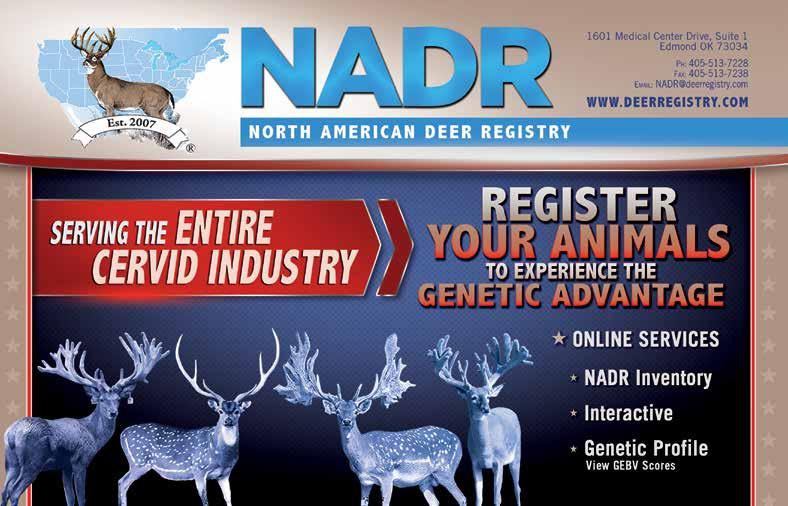

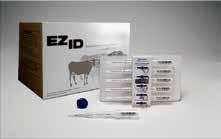
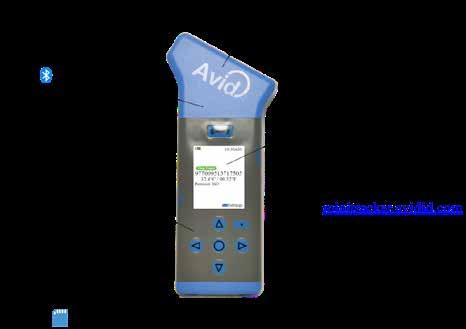


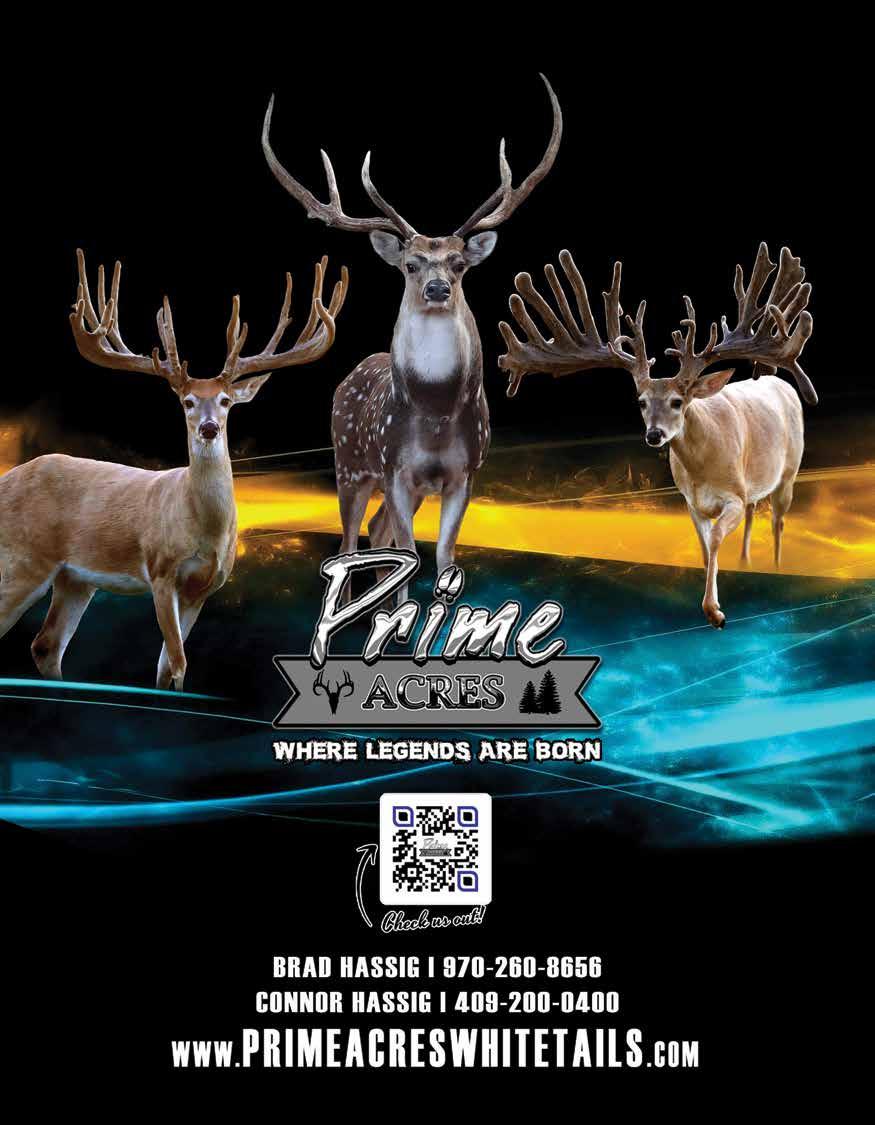
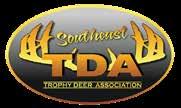
SETDA MEMBERS BUSINESS CARDS
Welcome to our SeTDA members Business card page. This is a way for members, both old and new, to reach out to each other for your services or to buy and sell deer.
If interested in getting into future business card pages, send your Farm or Business Cards to; info@southeasttrophydeerassociation.com.
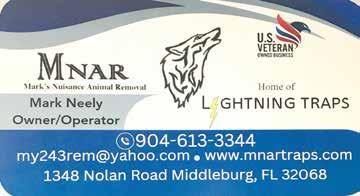


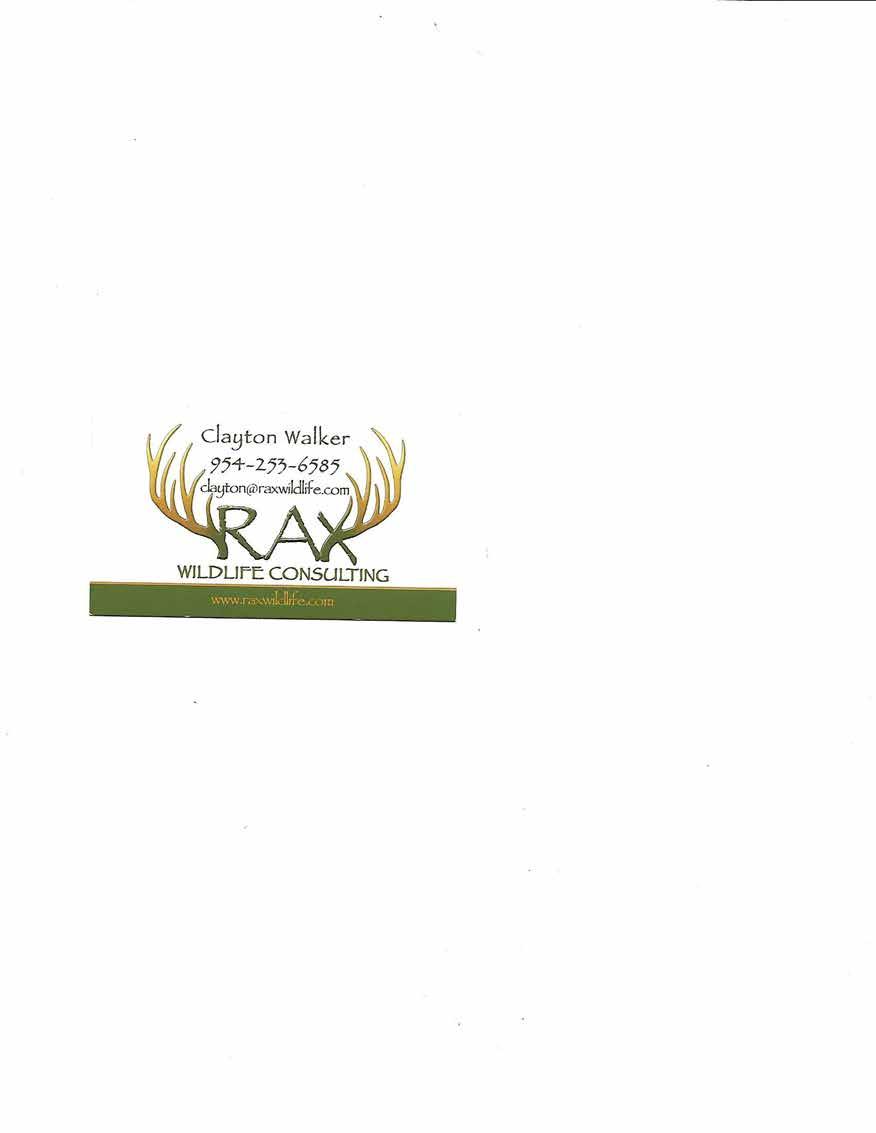
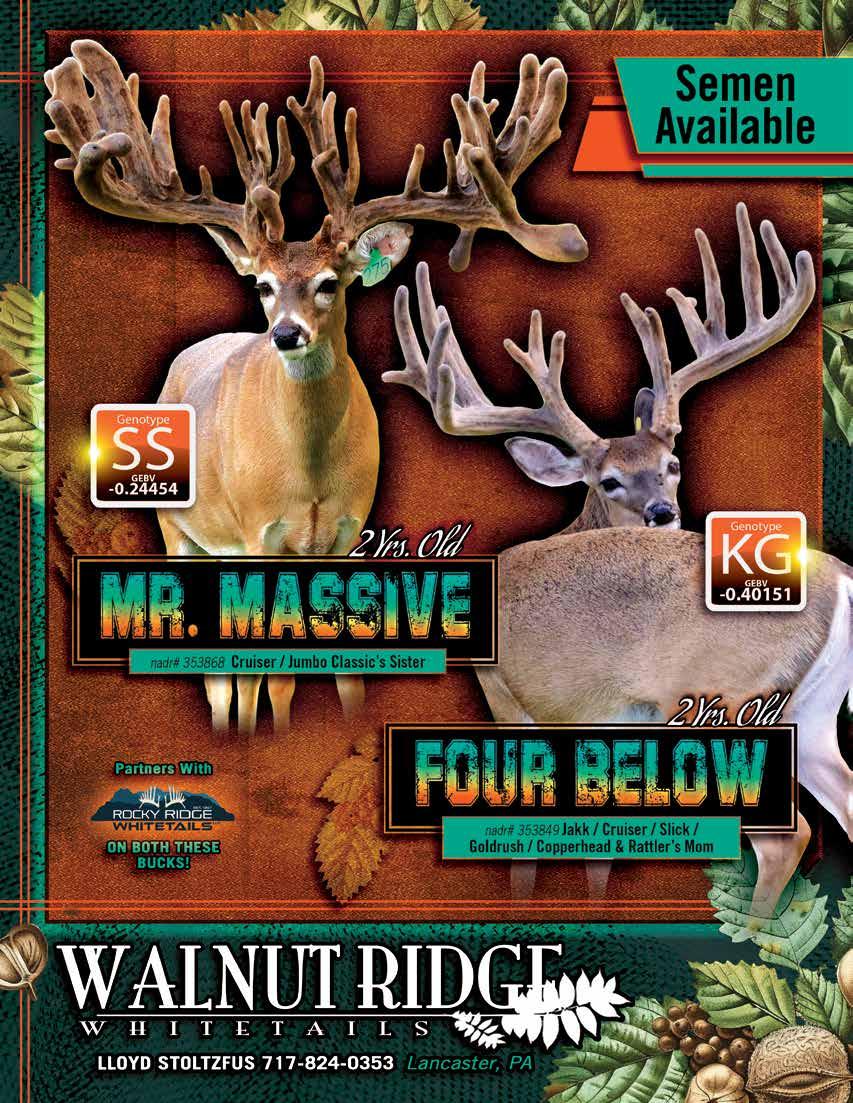
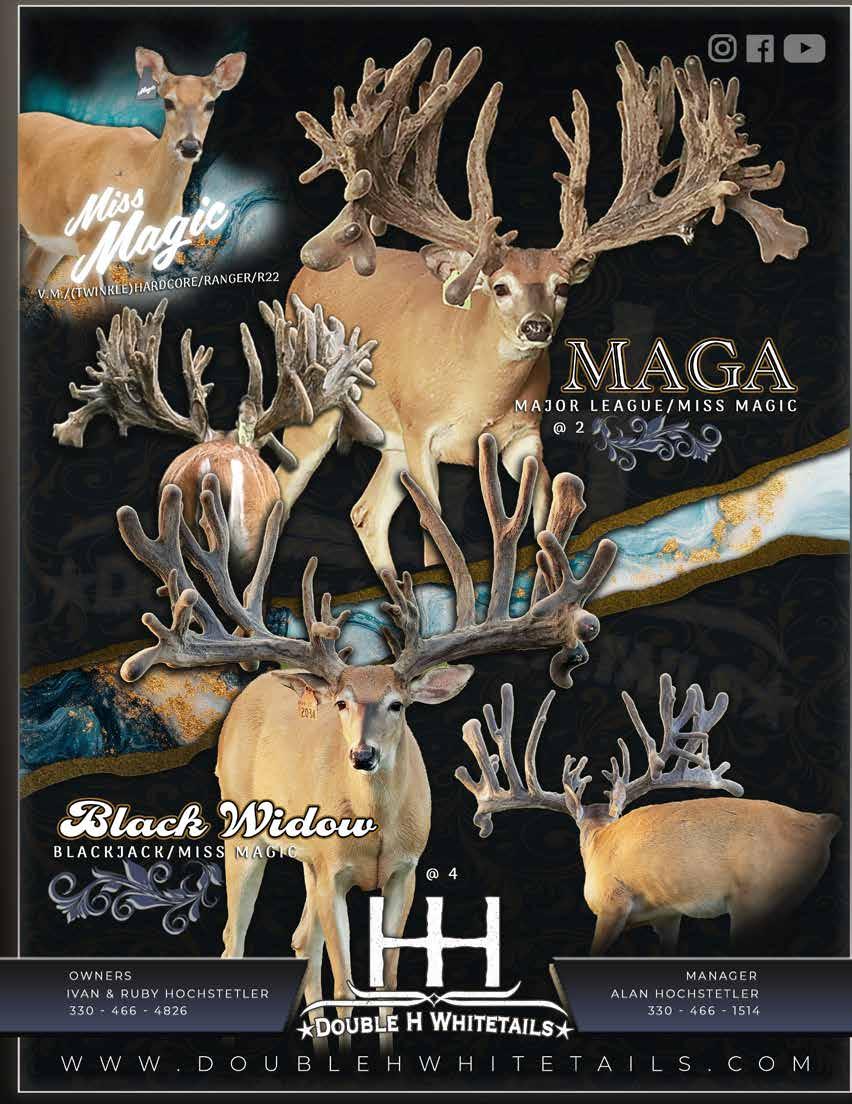
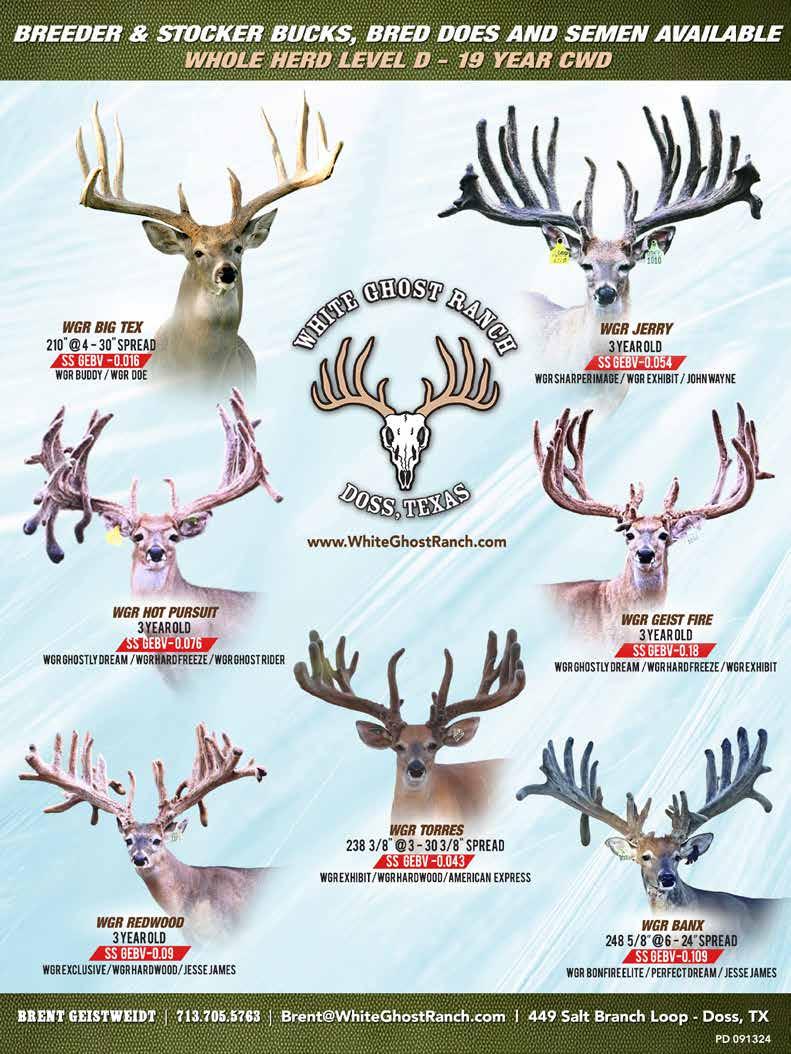



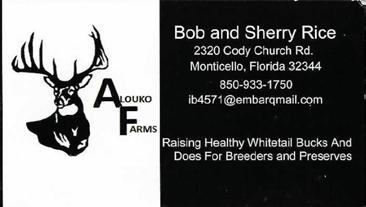

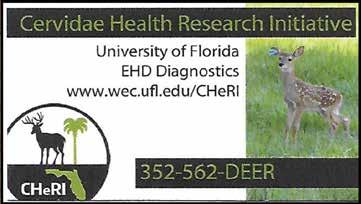
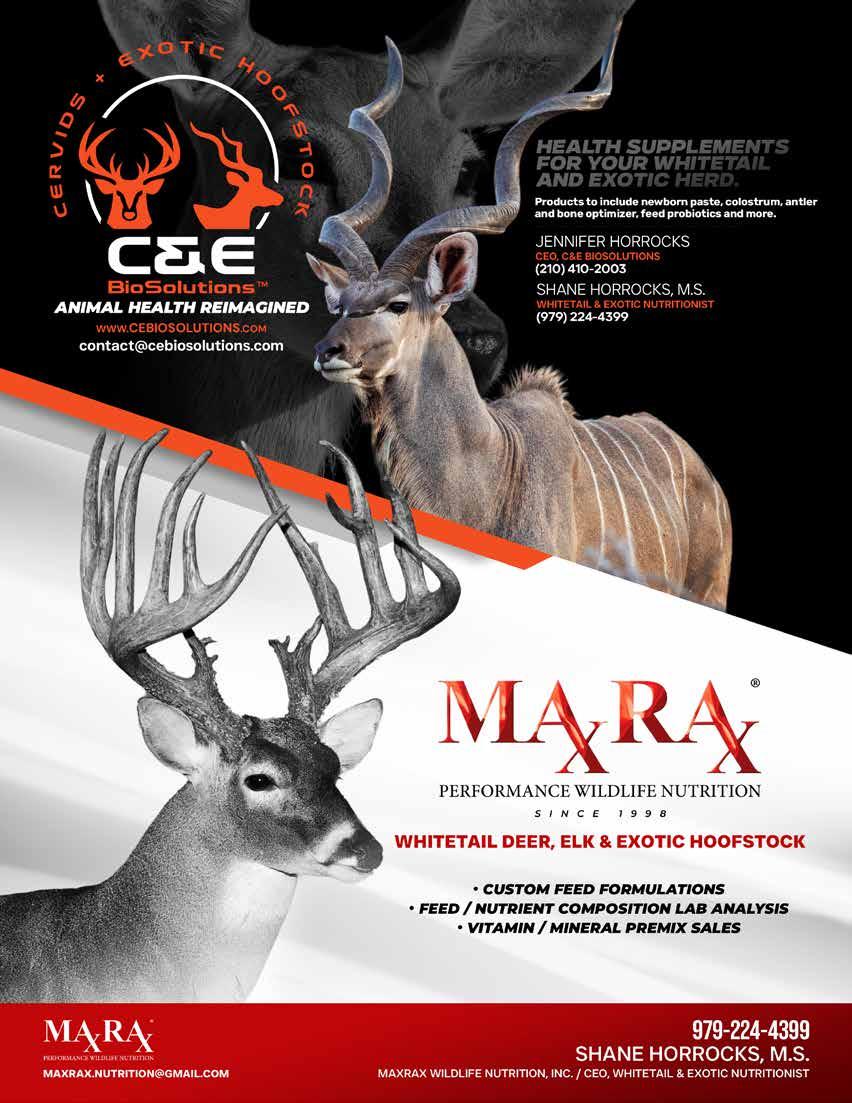
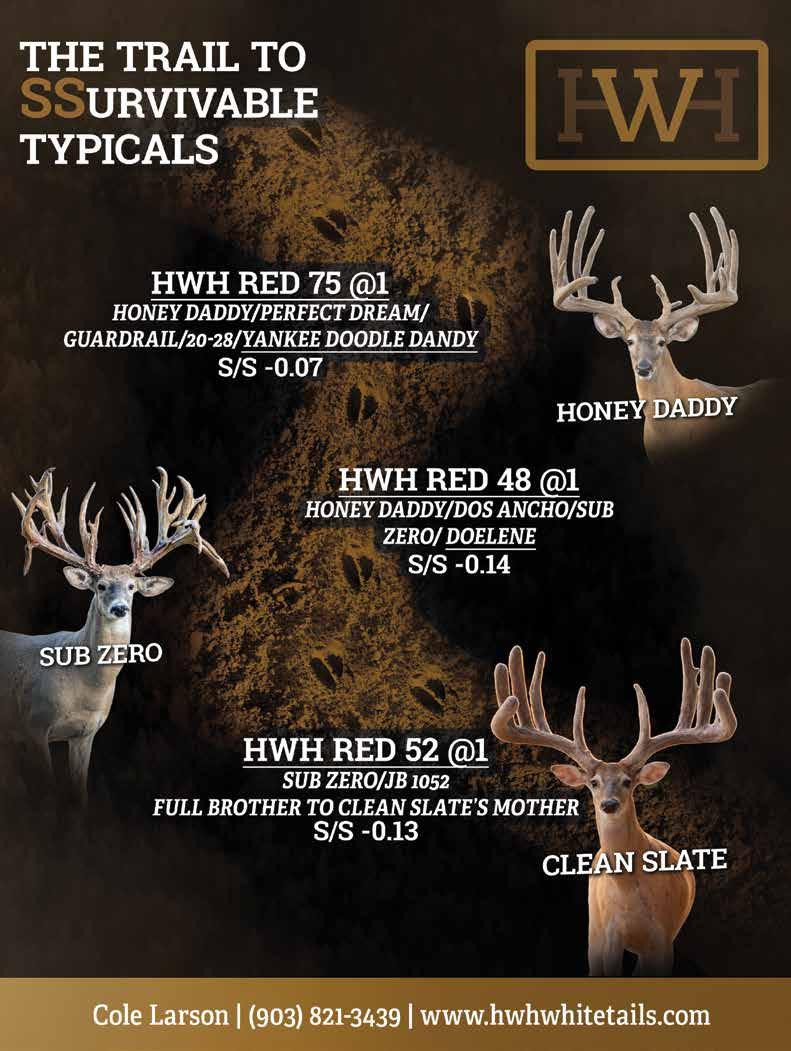
EMBRYO FLUSHING
A PROVEN BREEDING PRACTICE
By: Gail Veley • Sponsored by the Kentucky Alternative Livestock Association
When deer farmers tell Kevin Calmes “I know my deer,” he responds with “yes, but you don’t know the insides of your deer.” Calmes, who is a consultant and product shipper for Advanced Deer Genetics as well as the North American Small Ruminant Manager and Coordinator for Sexing Technologies, believes his specific recommendations for A.I. breeding and embryo flushing will provide a deer farmer with a safer and perhaps a more successful outcome.
Embryo flushing, often used to allow recipient does to carry the offspring of does with superior genetics, can be an efficient way to produce a uniformly high-quality herd. It all starts with placing CIDR’s in does with superior genetics, followed by follicle stimulating hormone (FSH) shots 11 days later and subsequently inducing multiple ovulations. In his years of experience travelling all over the world to work with cervids, Calmes has found that does, when run through a chute for any type of breeding procedure, tend to fight ovulation. “The stress put upon the doe by running them in a chute causes them to shut down in a sense,” Calmes, 57, explained. The better solution? “I prefer to run the deer into a facility, separated by ages, and blow dart FSH to get them to super ovulate,” he said.
Calmes has found that does who are darted with a specially designed 2.5 cc syringe with an 18 or 19gauge one inch needle shot out of a small pistol, absorb all of the FSH hormone and don’t even know they’ve been hit, since the small size of the needle and force of the pistol is so minimal. “The first time I’m in
there they might be nervous, but by the second or third time they aren’t because they don’t know something hit them,” he said, referring to the dart which was designed years ago by Chinese scientists. And while the hormone can also be administered in a chute with a pole injection, very often you will have backflow and wasted product, decreasing your chances of fertilization success.
After two to eight FSH hormone shots have been administered, depending on protocols, CIDRS’s are pulled on day 14 and followed up with a hormone shot of pregnant mare serum gonadotropin (PMSG.) The next step involves laparoscopic artificial insemination (A.I.) ideally performed 57-58 hours later. Approximately six to eight days after that, embryos are flushed (as though it were another laparoscopic surgery in terms of preparation) however they are under sedation longer. After flushing and retrieval, embryos are placed in a petri dish and graded on a scale of one to three by an embryo specialist. Grade one embryos, considered the better ones, are either placed immediately into recipient does or frozen for later use. Grade two and three embryos, considered not as hearty as grade one, need to be placed into recipient does immediately as they may not retain their viability should they be

frozen and used later. While a small percentage of does whose embryos are flushed may retain one or two and carry them to a full-term pregnancy “I suggest rebreeding her that same year naturally, to help break up the scar tissue from the previous procedures and not put any additional stress on her,” Calmes said. “We push these animals so much. And whether it’s the chemicals sprayed on what we feed them or a lack of chelated absorbable vitamins and minerals in their diets, I have also found in my work that our semen quality is driven down year after year. On average, ten years ago we had 4-6 billion cells per buck per collection, and today it’s 2 to 3 billion cells per collection. Given that deer genetics are held in such high regard, I believe the industry as a whole needs to sit down and look at this.”
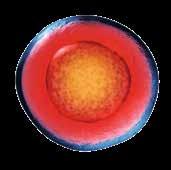


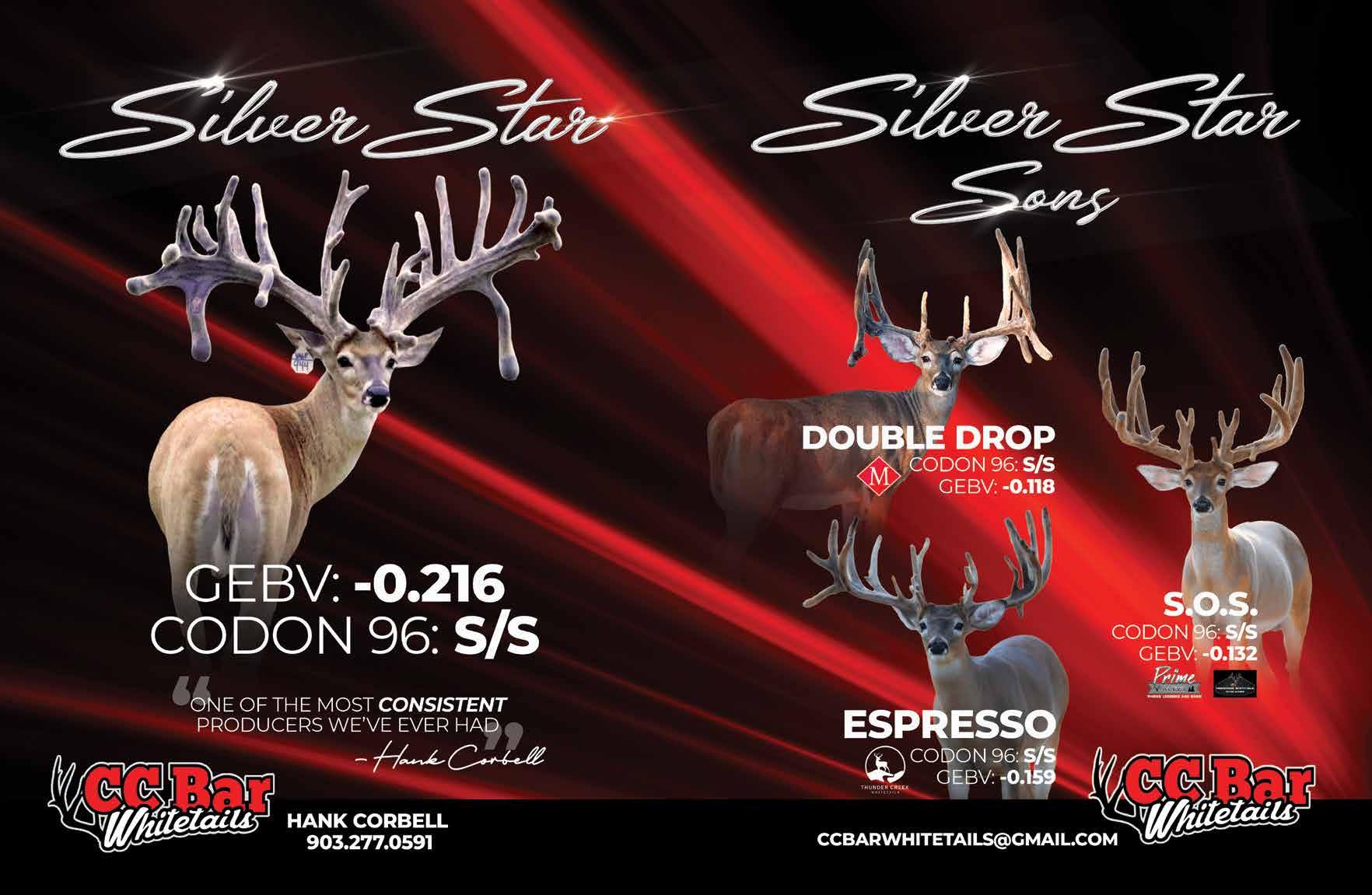

Venison Mushroom Swiss Burgers
Have you ever had a burger so good that you couldn’t set it down? Yeah? This is one of those burgers. The secrets to a perfect venison mushroom swiss burger are a little bit of time and a whole lotta cheese. Perfectly caramelized mushrooms and onions are an exercise in patience but once you have them paired with a deliciously cheesy, juicy venison burger, you’ll want to make them over and over again.
IngredIents
Caramelized Mushrooms and Onions:
• 1 lb cremini mushrooms, sliced
• 4 cups onions, julienned (cut from root to tip)
• 2 tablespoon butter
• salt and pepper, to taste
Burger Patties:
• 1 lb ground venison (or elk, moose, antelope, beef, etc.)
• 2 tablespoon worcestershire sauce
• 1 tablespoon olive oil
• 1 teaspoon garlic powder
• 1 teaspoon onion powder
• ¼ teaspoon salt
• ¼ teaspoon black pepper
• 4 slices Swiss cheese, cut into ¼” squares
Other Ingredients:
• 4 slices Swiss cheese
• 4 brioche hamburger buns
• mayo (optional)
• ketchup (optional)
InstructIons

1. Carmelize Mushrooms and onions in a large pan over medium-low heat.
2. Preheat grill to 350°F.
3. To a medium bowl, add ground meat, worcestershire sauce, olive oil, garlic powder, onion powder, salt, and pepper.
4. Mix with your hands until spices are well-combined with the meat. Add in diced pieces of Swiss cheese and gently incorporate them into the meat.
5. Divide meat into 4 equal portions. Roll each piece of meat into a ball, then form into a patty by squishing it between the palms of your hands. Patties should be about 4.5-5” in diameter. Using your thumb, place a small dimple in the middle of each patty.
6. If using a pellet grill, open the flame broiler lever to cook directly over the flames. Carefully place burger patties on grill and cook for 4-5 minutes.
7. Flip and cook an additional 3-4 minutes. Remove to a foil-lined flat grill pan or small sheet pan.
8. Top burgers with mushrooms and onions, then top with cheese. You can save some of the mushrooms and onions out to place on top of the melted cheese too, if desired.
9. Place pan back on grill and cook for 4-5 minutes, using indirect heat (not directly over the flame).
10. Remove pan from grill when cheese is melted.
11. Spread mayo on buns if desired, then add burgers to the bottom bun. Drizzle with ketchup if desired and place top half of bun on top. Enjoy!
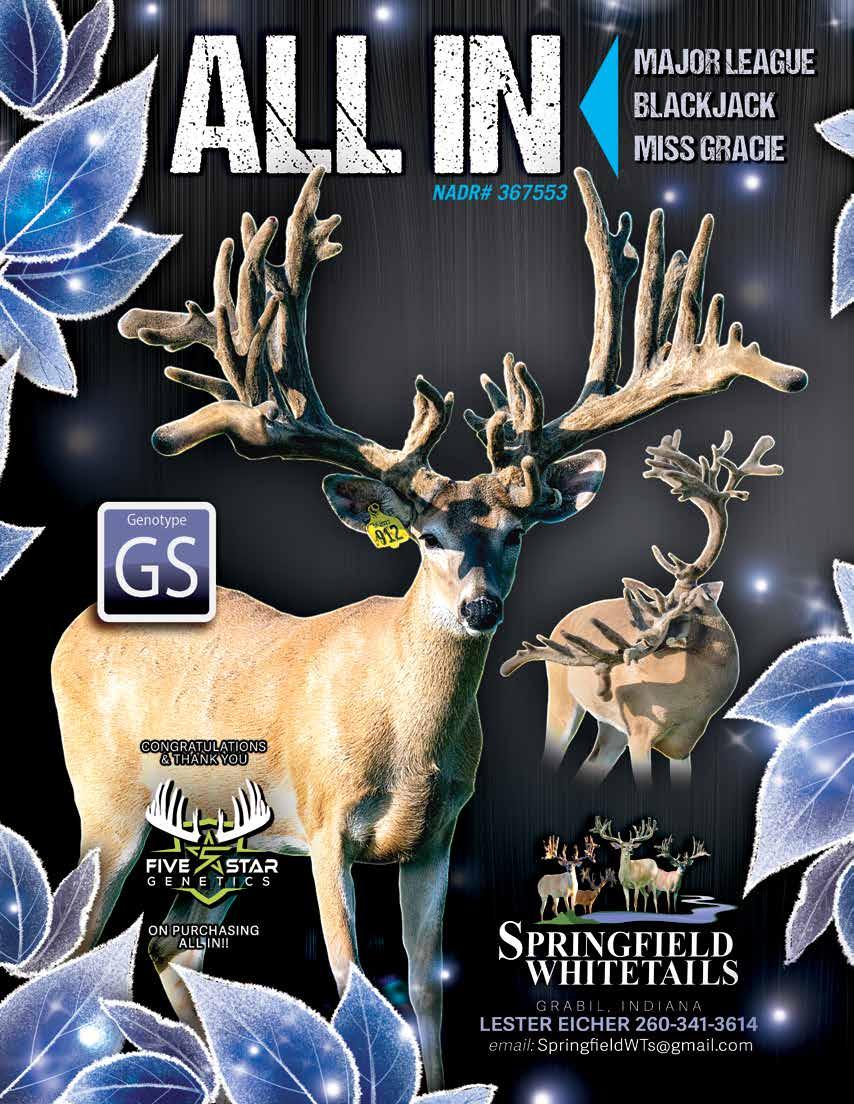
• Alabama Deer Association
• Illinois Deer Farmers
• Indiana Deer And Elk Farmers Association
• Iowa Whitetail Deer Association
• Kansas Elk and Deer Association
• Kentucky Alternative Livestock Association
Buckaneer Package:
44 ISSUES FOR 1 YR
Reaching out to over 2500 members
(11 Publications x 4 quarters)
17 State Associations - Approx. 2500 readers
$189 / Issue ($8316. / Yr) ~ Full Page
$107 / Issue ($4708. / Yr.) ~ Half Page
(55-59% Discount off single ad placement)
Yearling Package:
4 ISSUES FOR 1 YR.
(1 Publication x 4 quarters)
$252/ Issue ($1008. / Yr) ~ Full Page
• Minnesota Deer Association • Missouri Deer Association • New York Deer and Elk Farmers Association • North Dakota Deer Ranchers
• Pennsylvania Deer Farmers Association
• South Dakota Deer & Elk Breeders
• Southeast Trophy Deer Association


• Texas Deer Association
• United Deer Farmers of Michigan
• West Virginia Deer Farmers Association
• Whitetail Deer Farmers of Ohio
• Whitetails of Louisiana
• Whitetails of Oklahoma
Doe-Re-Mi Package:
16 ISSUES FOR 1 YR.
(4 Publications of your choice x 4 quarters)
$220 / Issue ($3520. / Yr) ~ Full Page
$121 / Issue ($1936. / Yr.) ~ Half Page (48-54% Discount off single ad placement)

$137 / Issue ($548. / Yr.) ~ Half Page (40-48% Discount off single ad placement)

Single Issue In Any Of Our Eleven State Publications: Full Page: $420.00 1/2 Page: $263.00



Exotic
Package Add On *
TEXAS DEER ASSOCIATION MAGAZINES
4 ISSUES FOR 1 YR. (Can be added to Buckaneer or Doe-Re-Mi package) Reaching out to over 800 TDA members
(3 Tracks Publications & 1 Auction Catalog)
$428 / Issue ($1712. / Yr) ~ Full Page
$267/ Issue ($1068. / Yr.) ~ Half Page
(55-59% Discount off single ad placement)
Single Issue In TDA Publications:
Two Page: $1500. One Page: $950 1/2 Page: $650





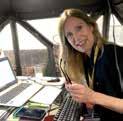
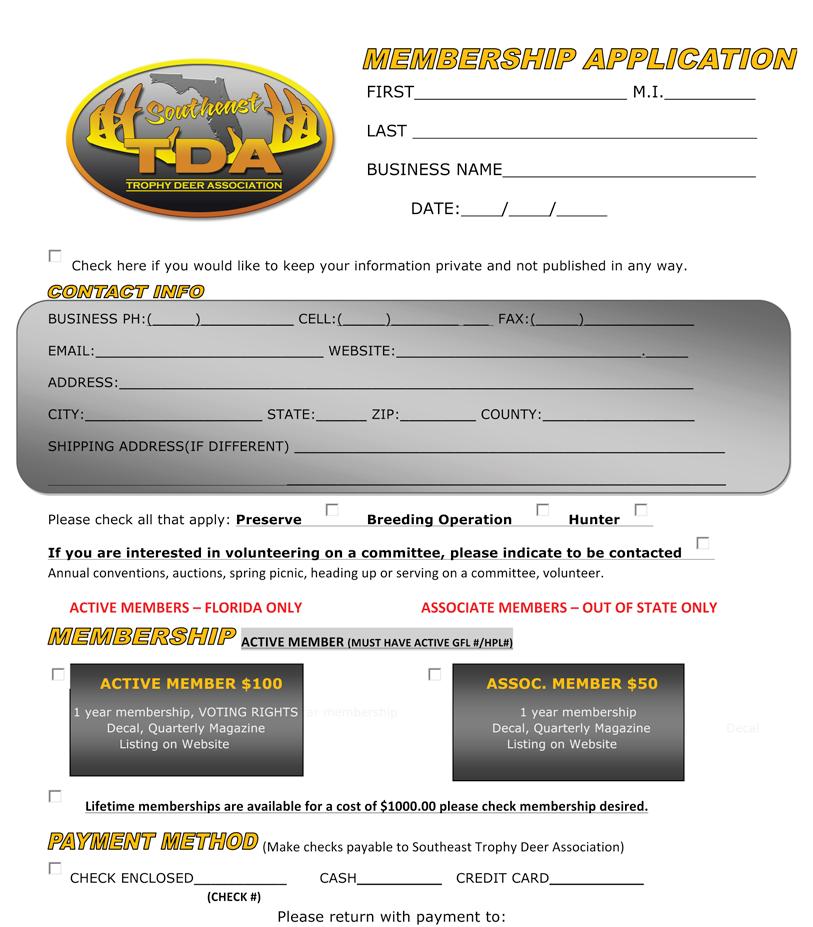
SOUTHEAST TROPHY DEER ASSOCIATION
Dr. Bill Leffler
PO Box 159
Morriston, FL 32668
